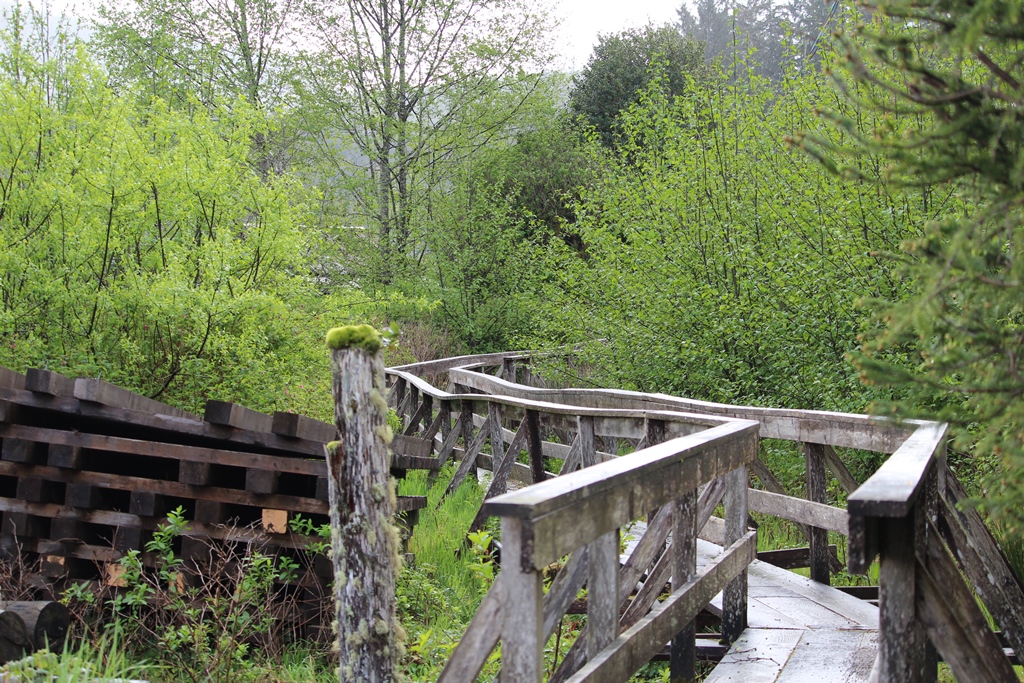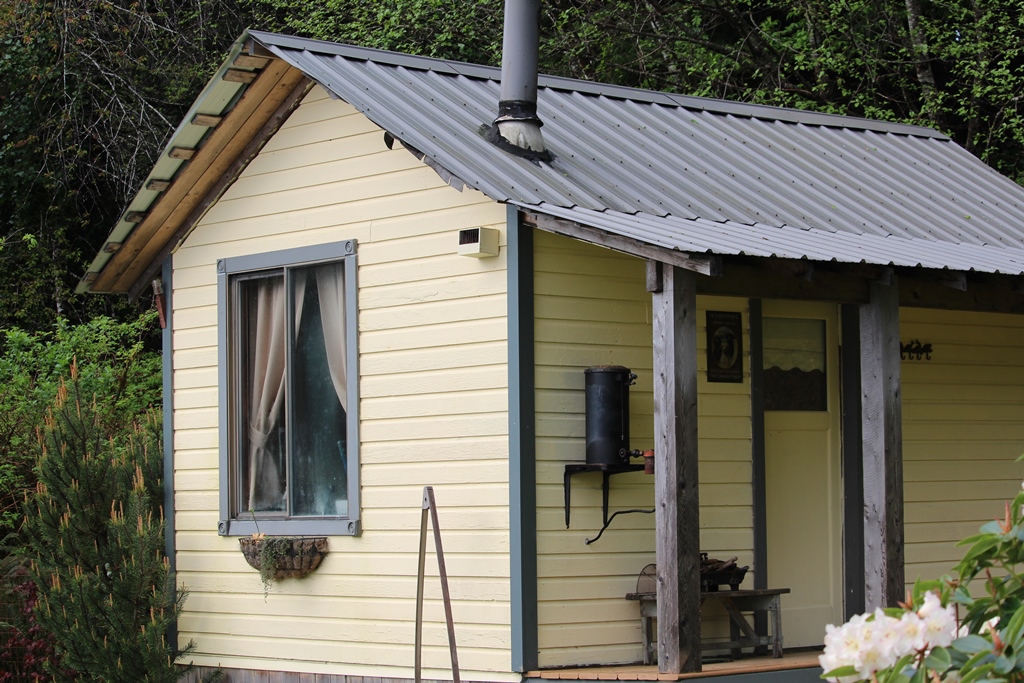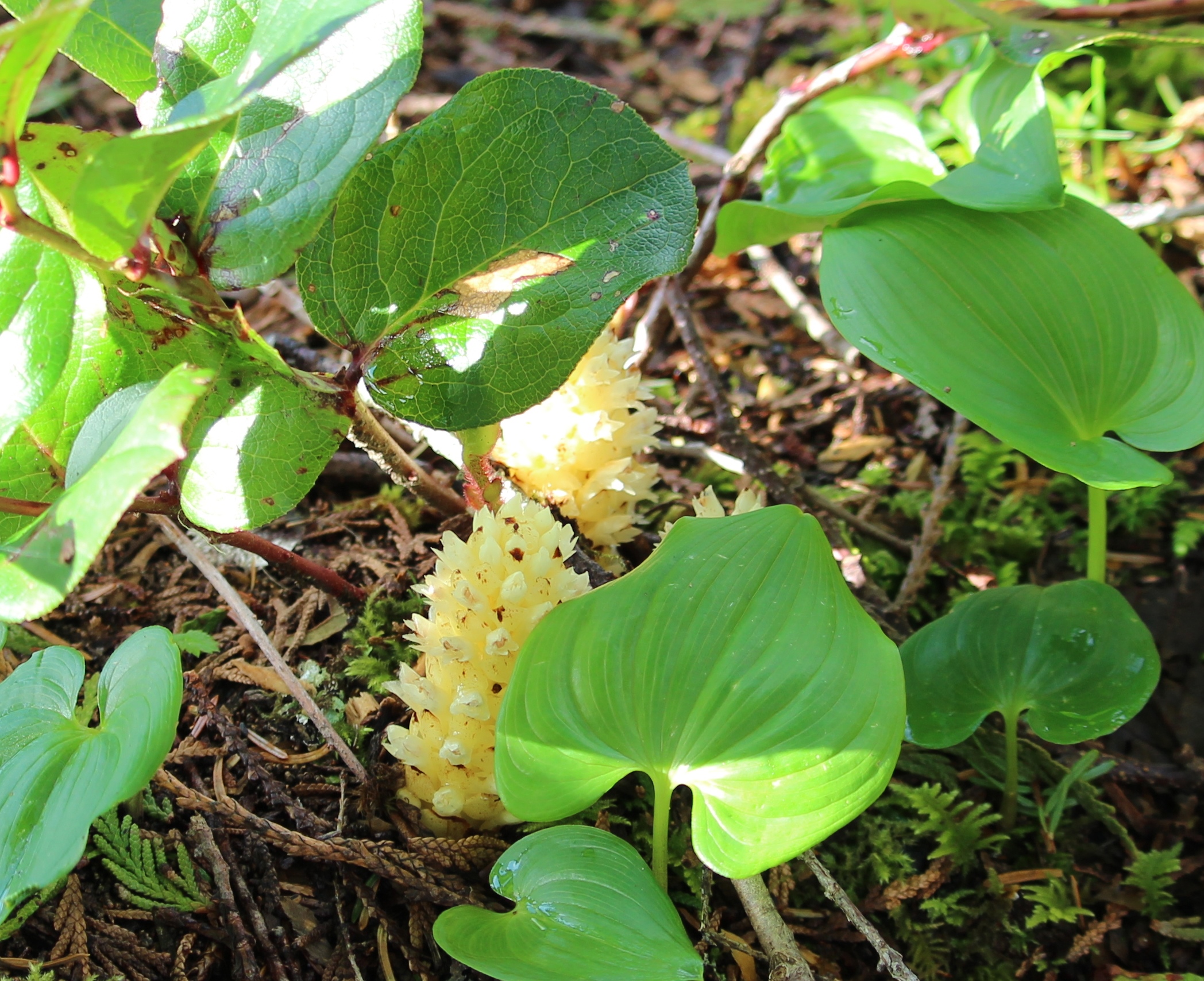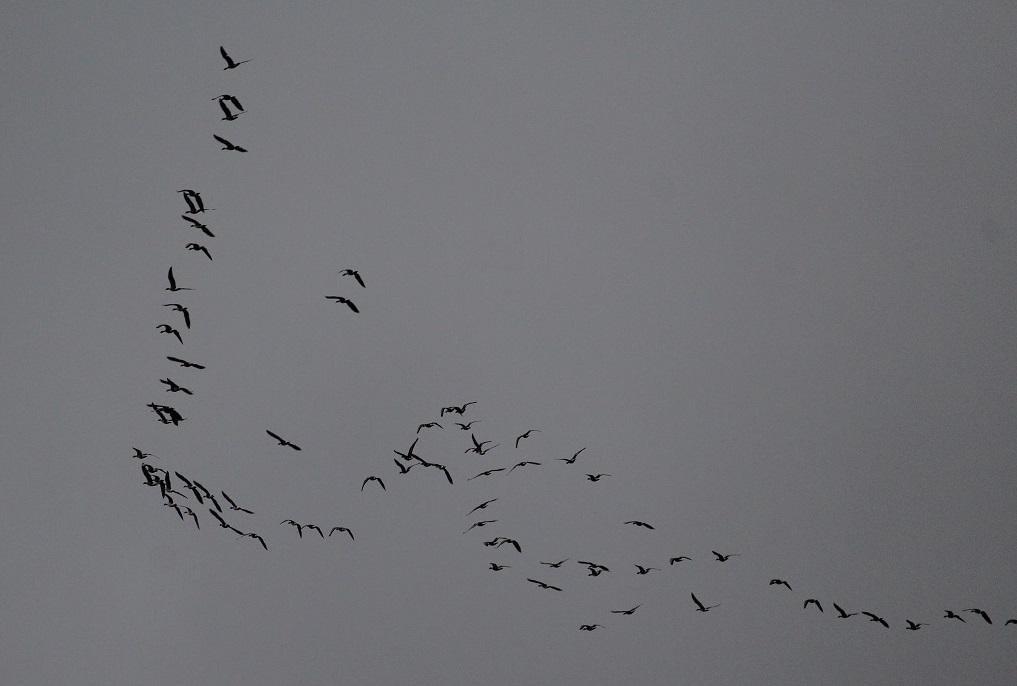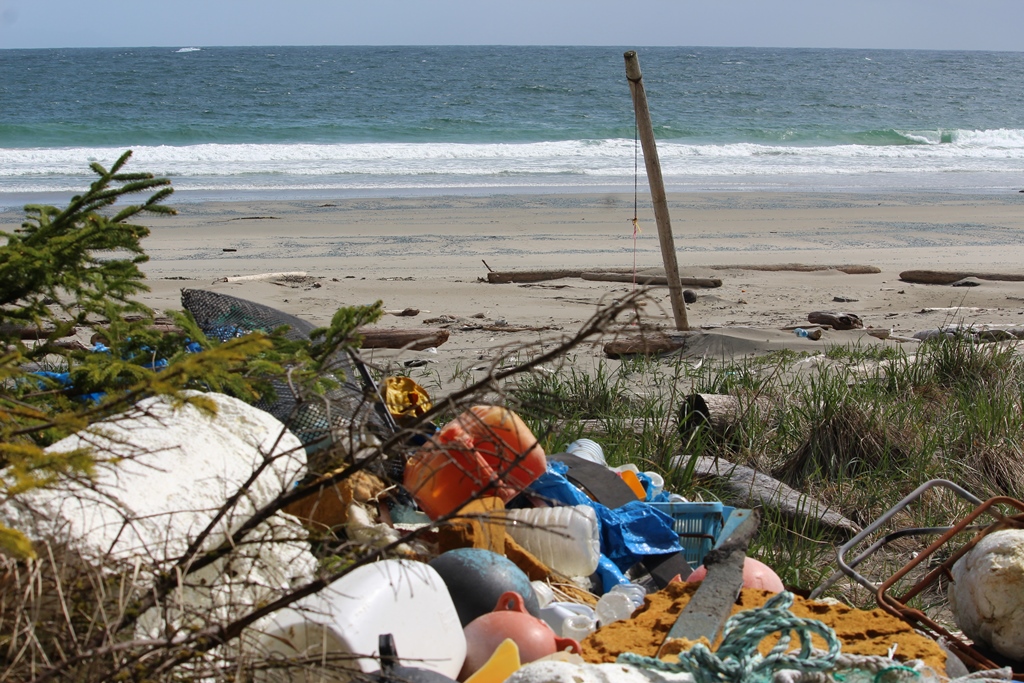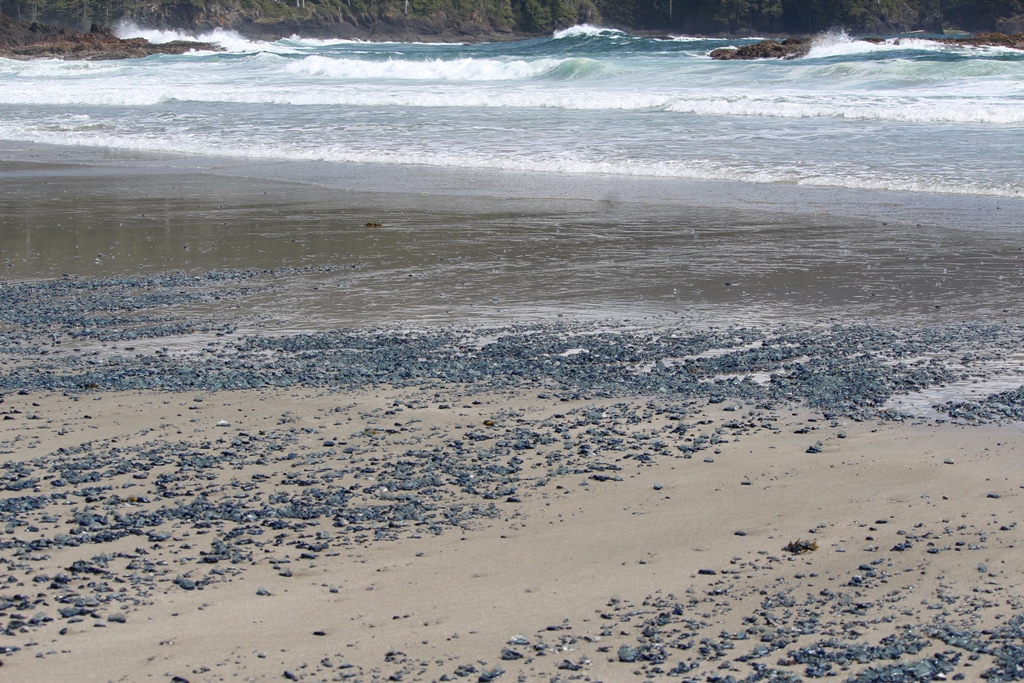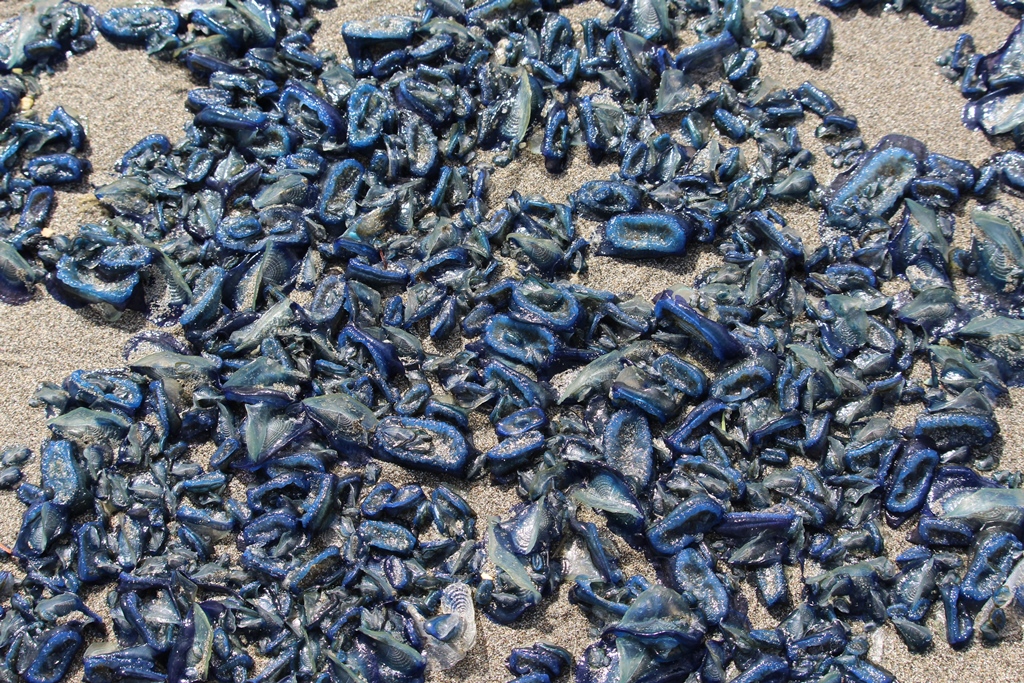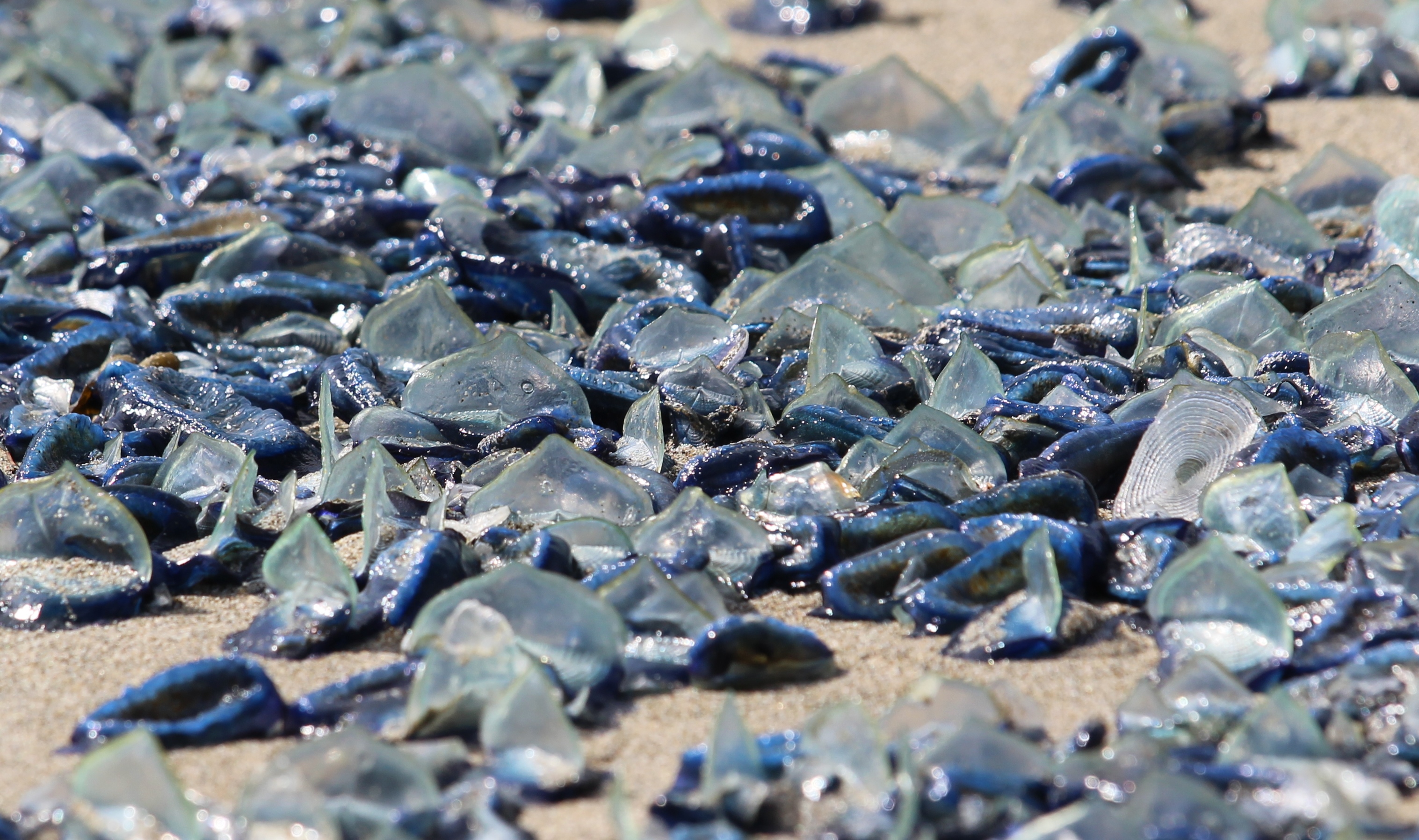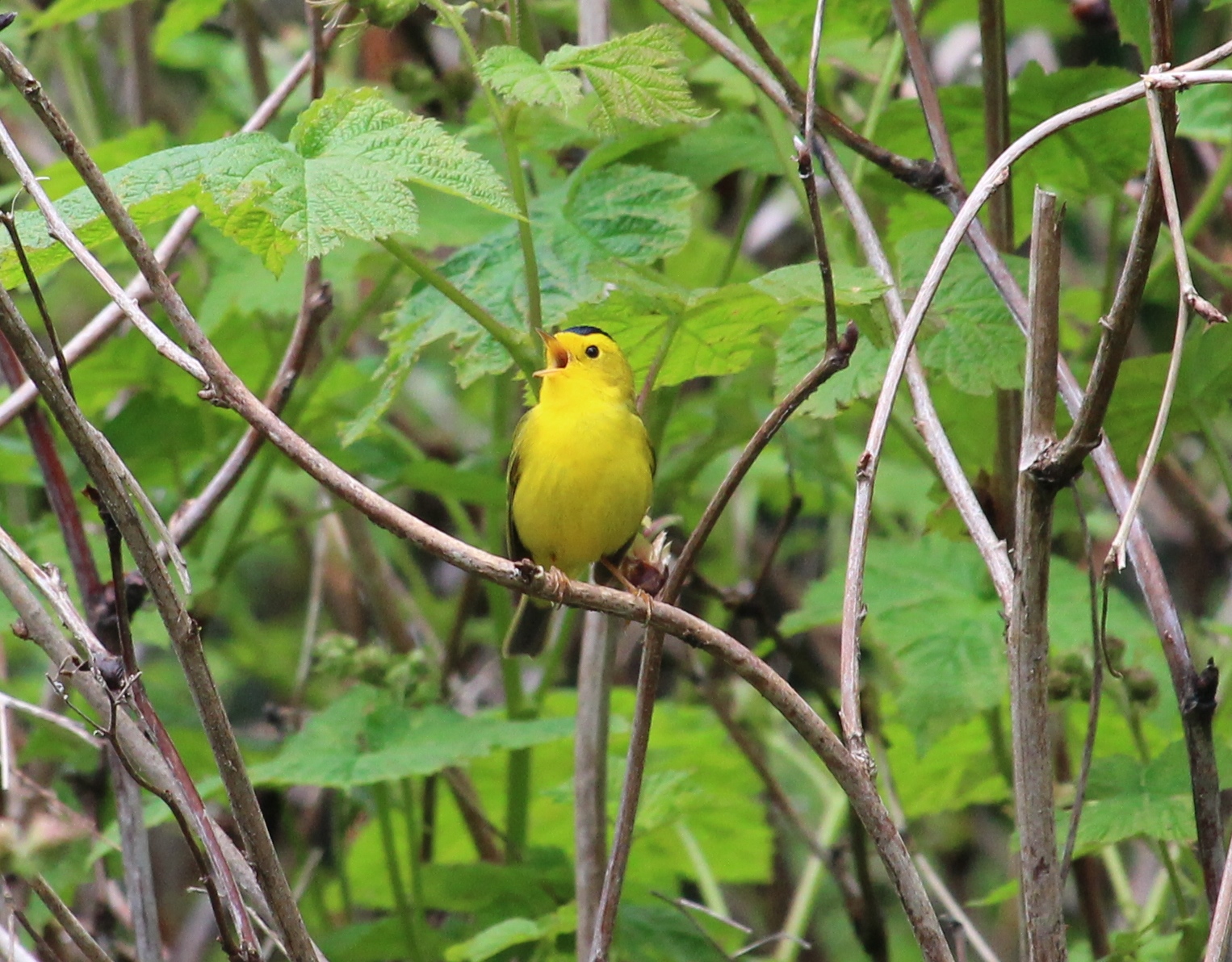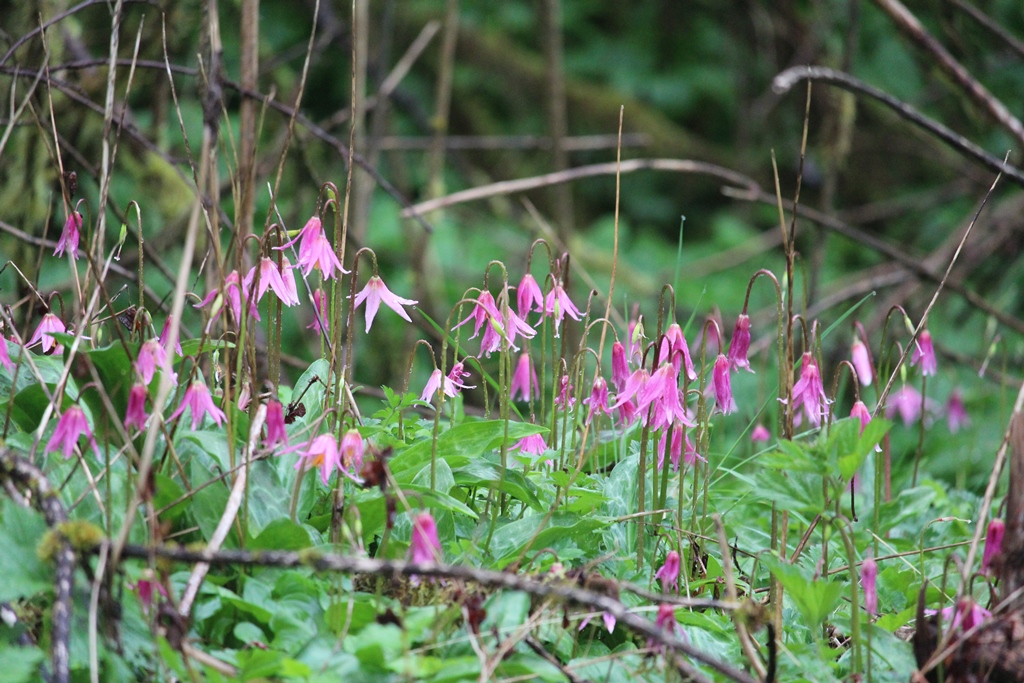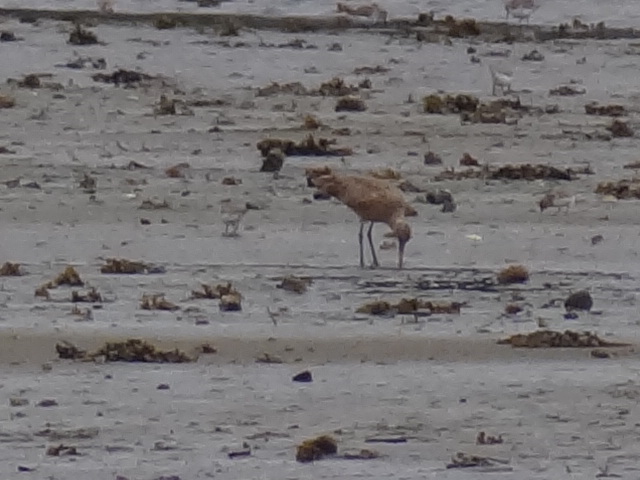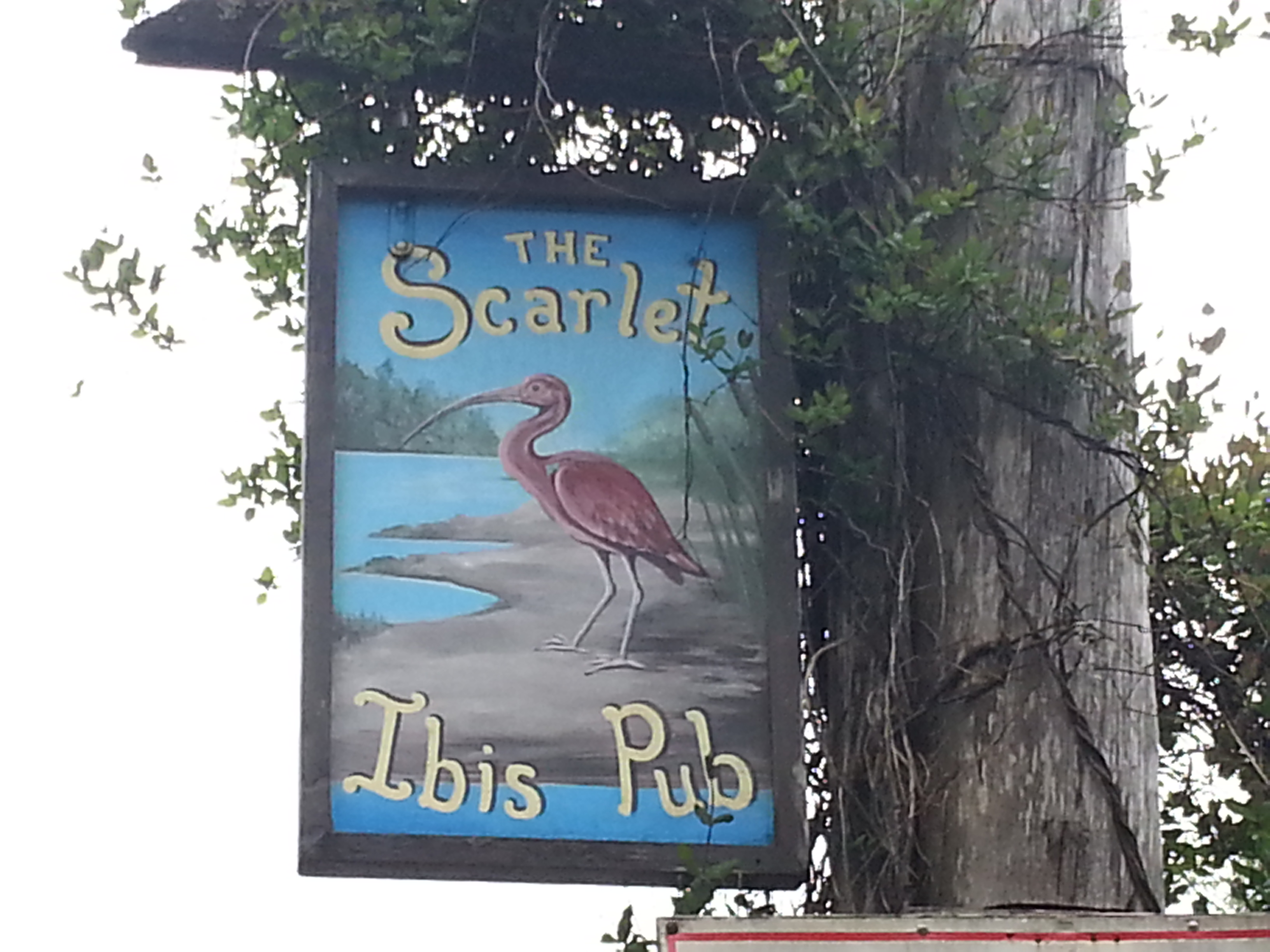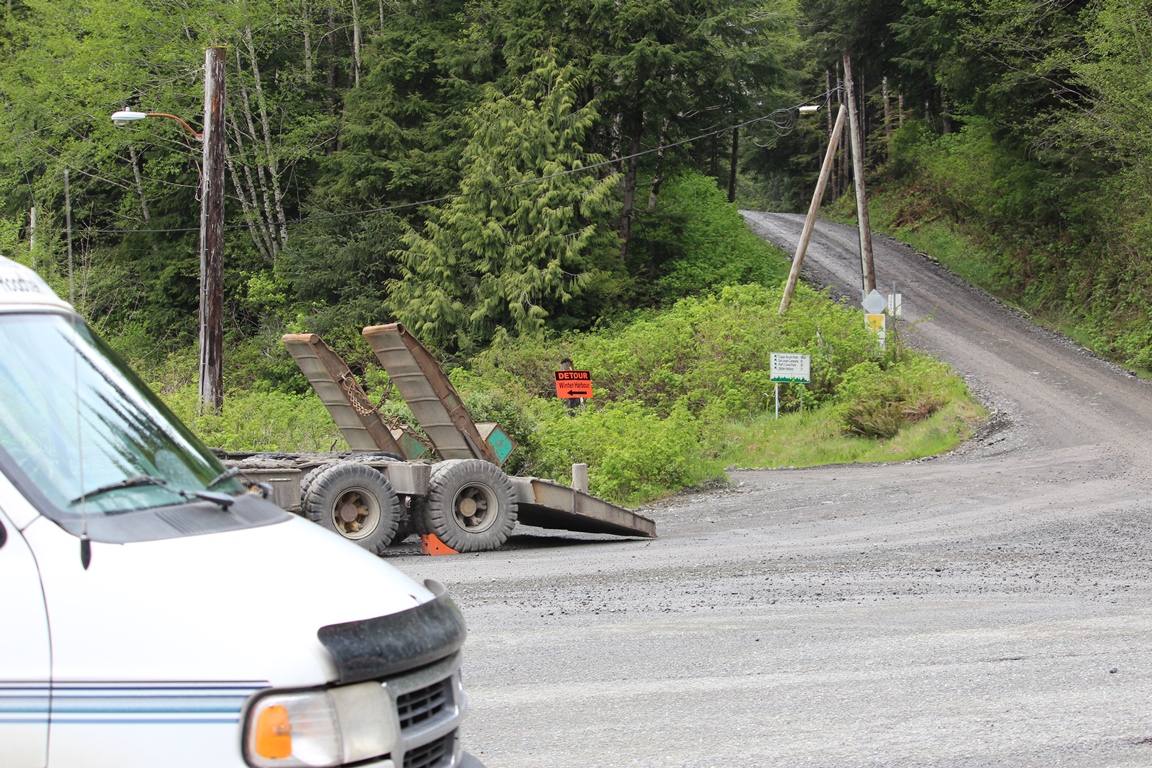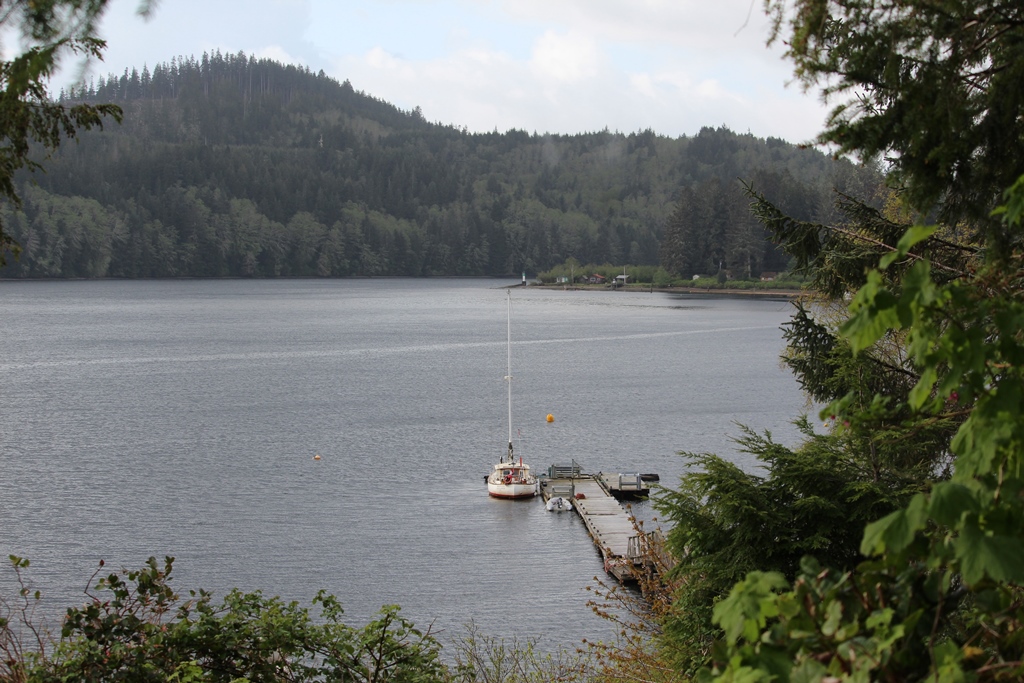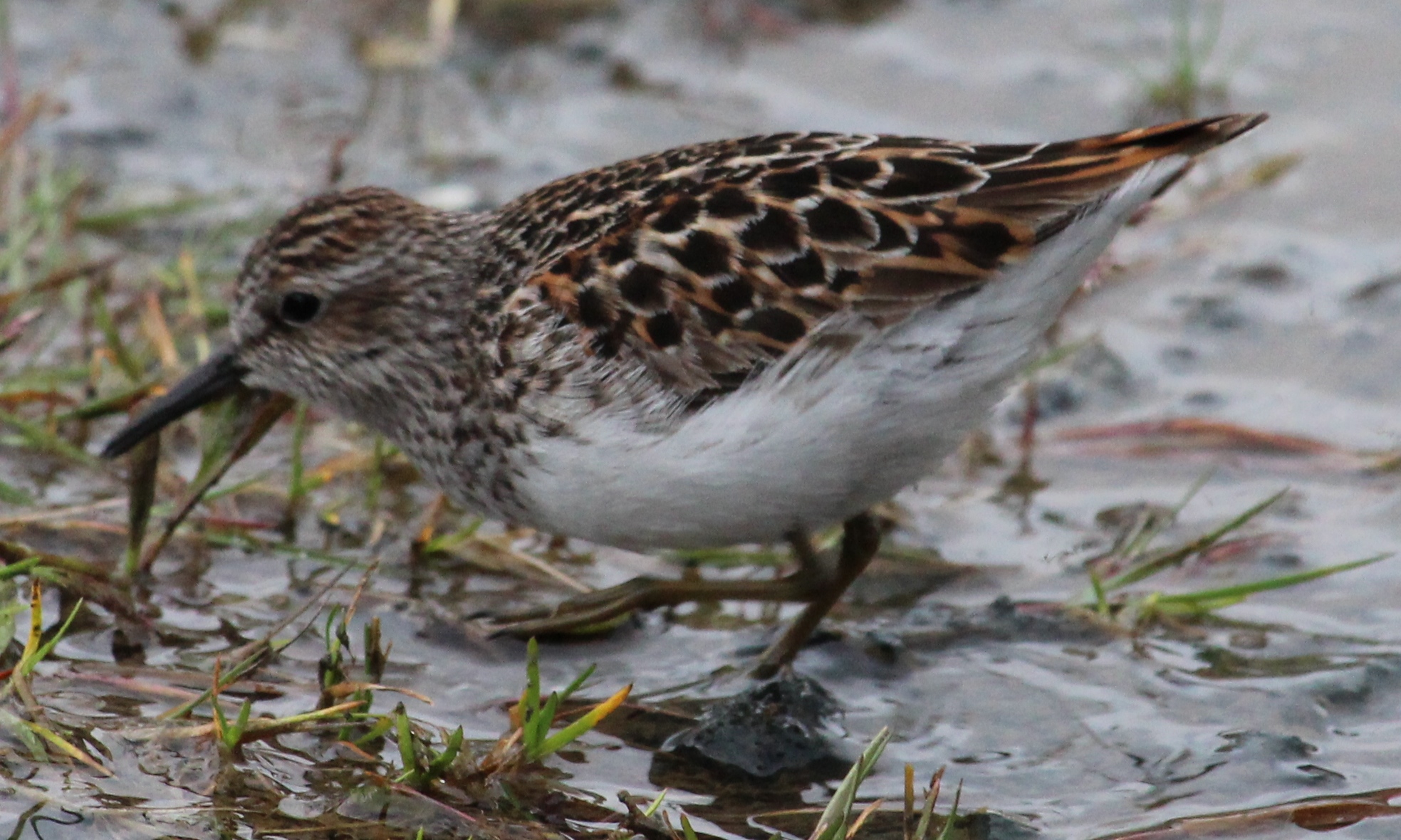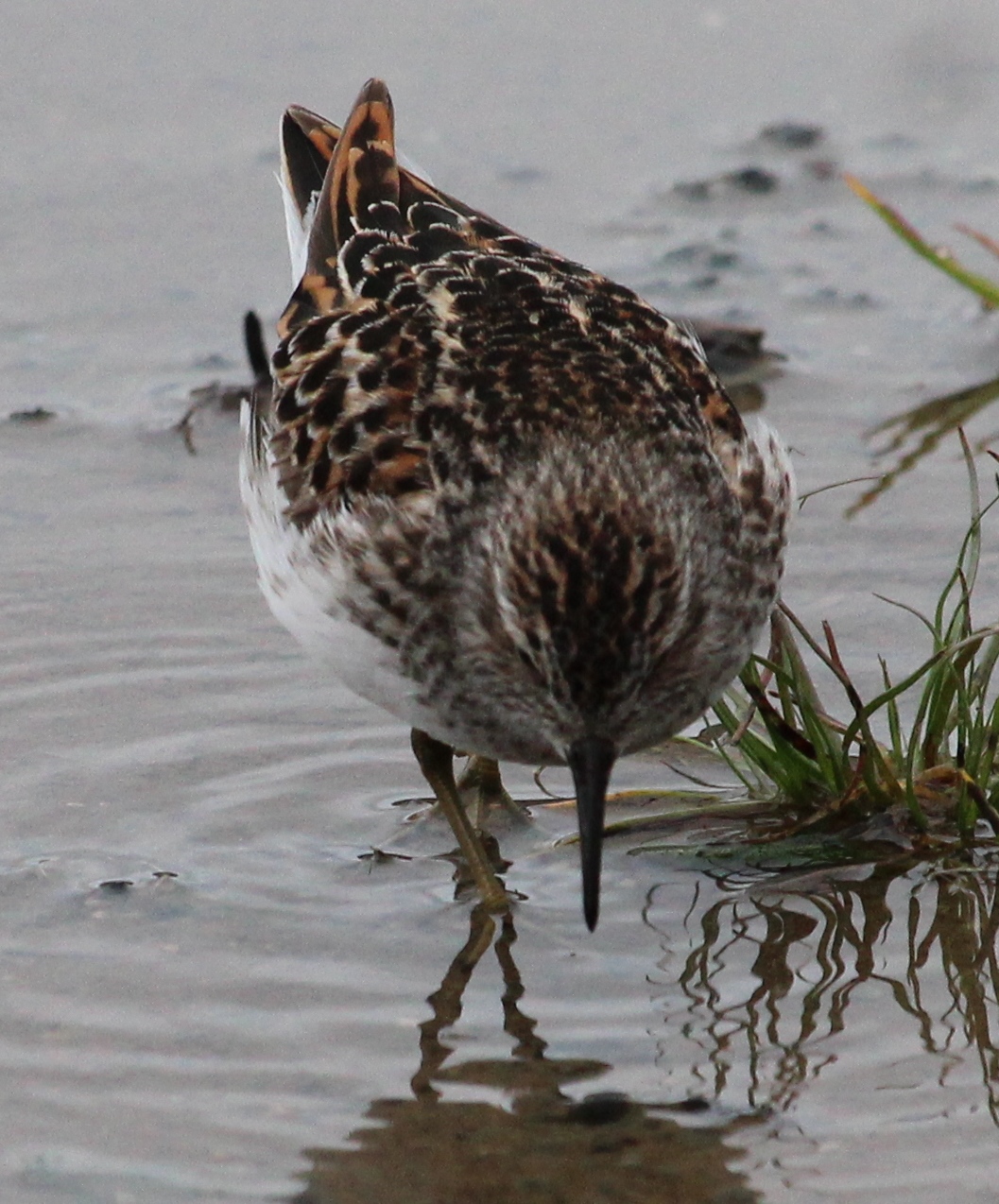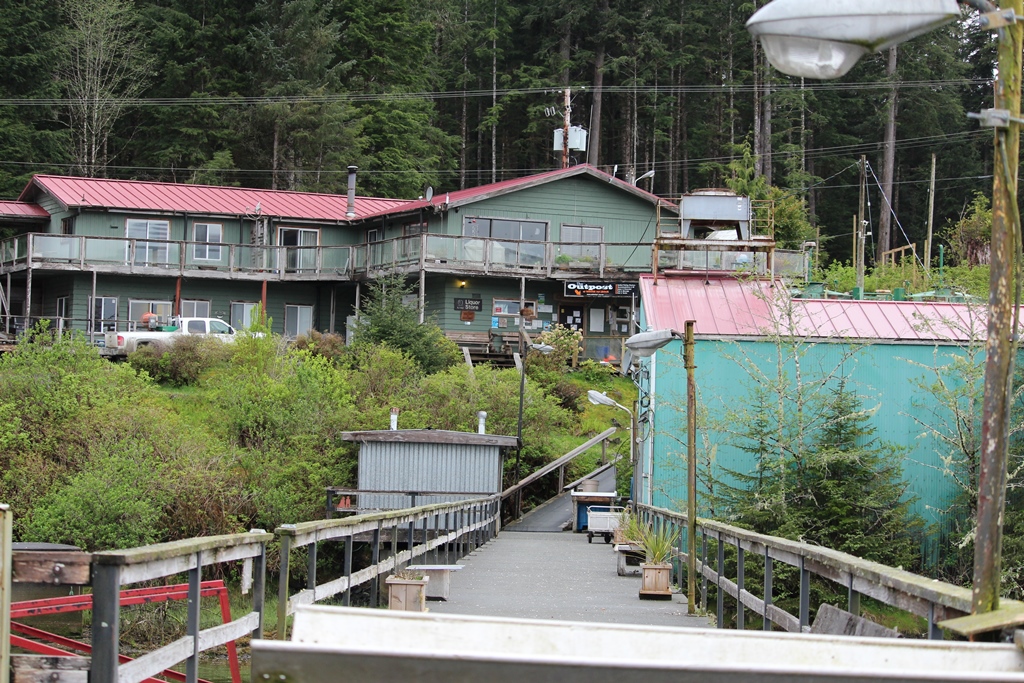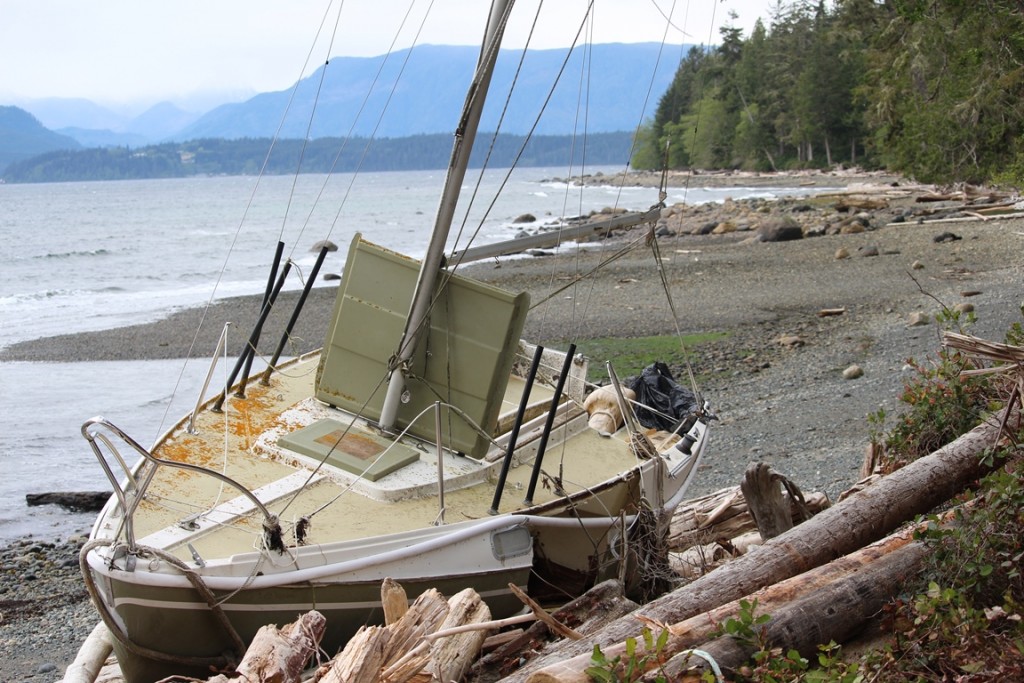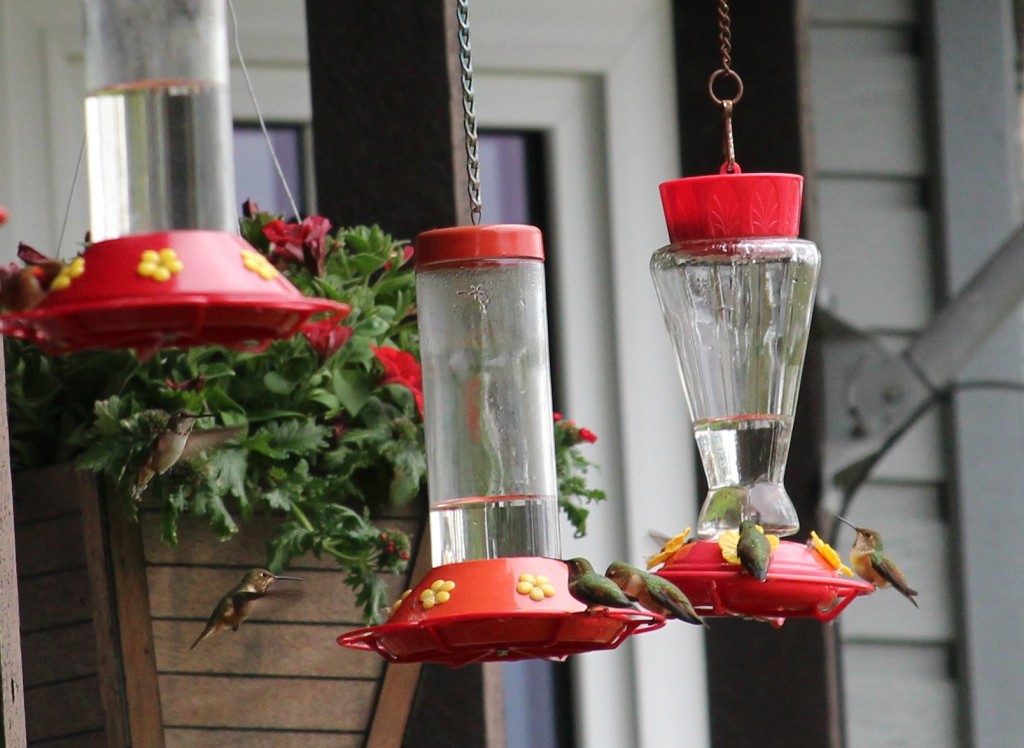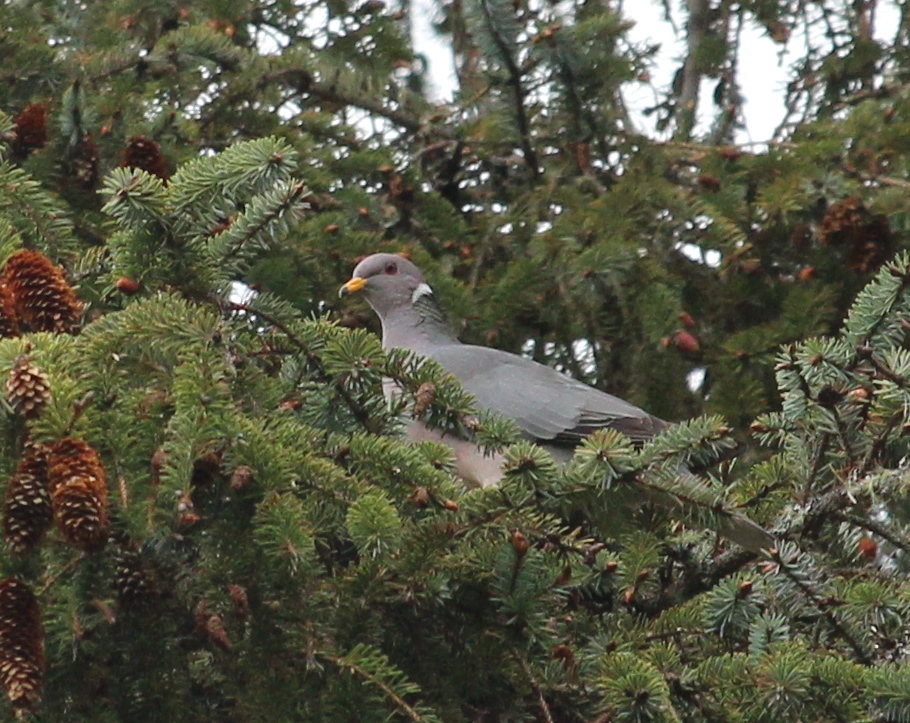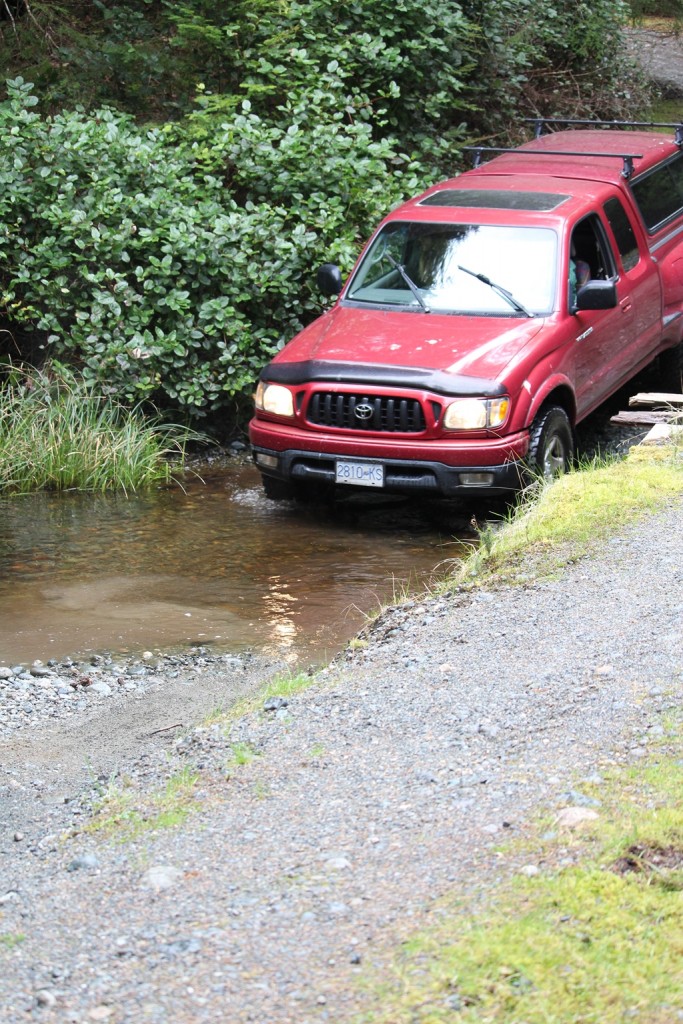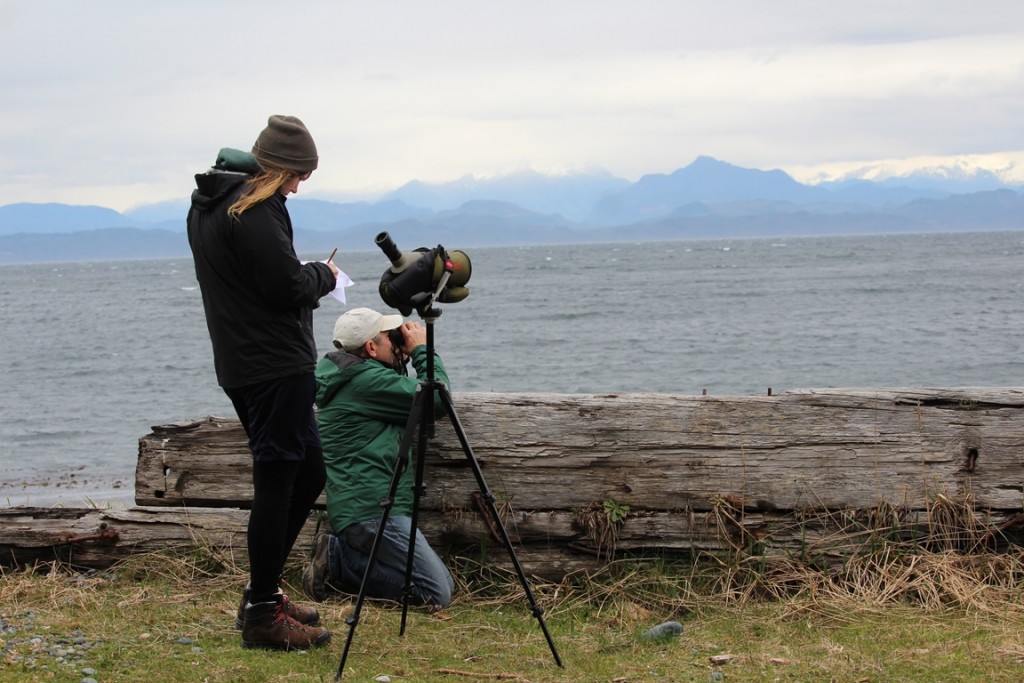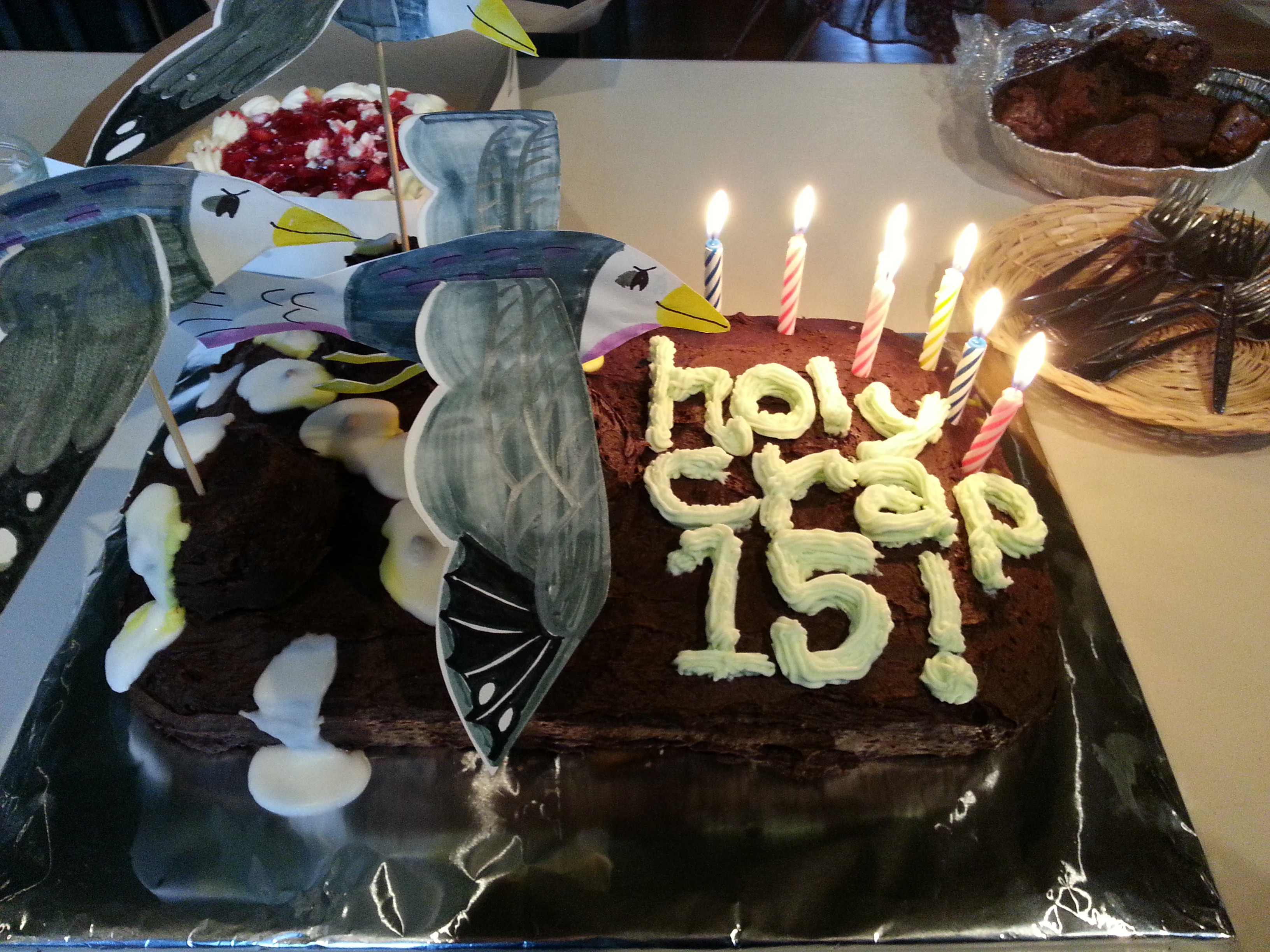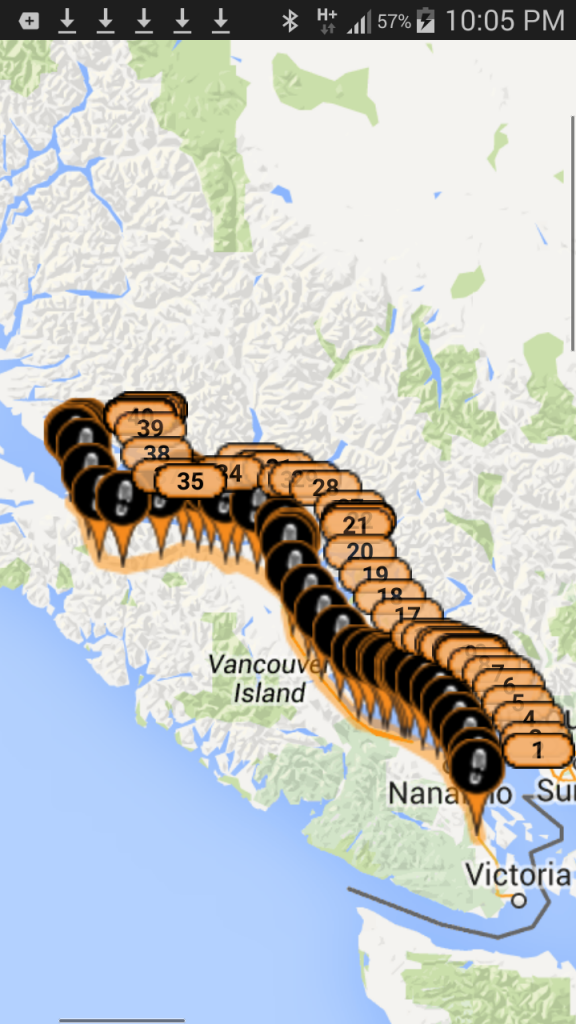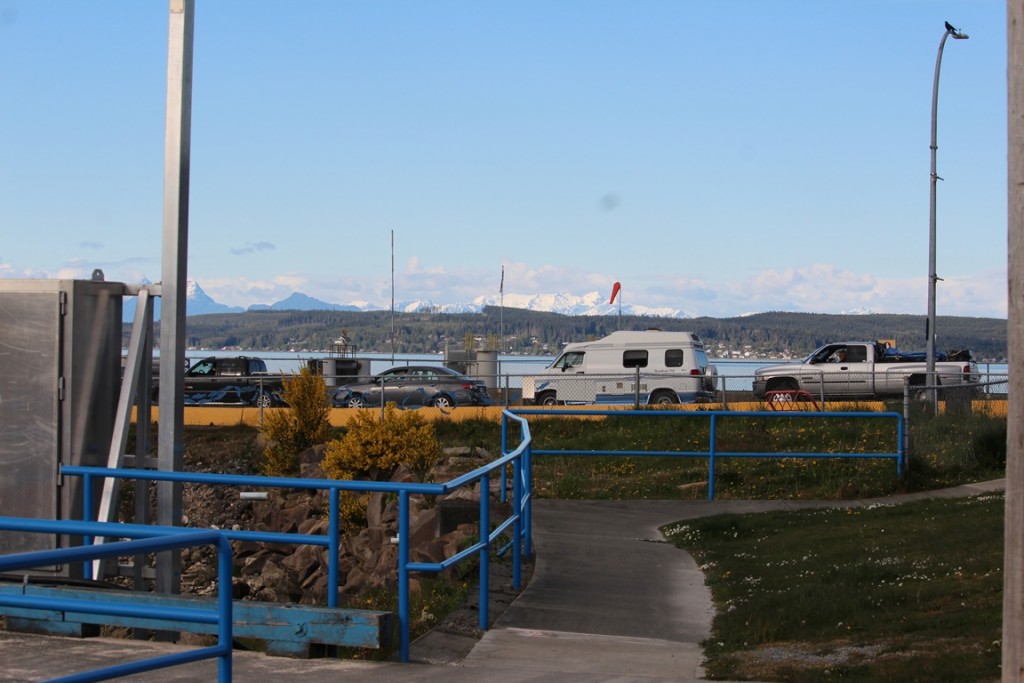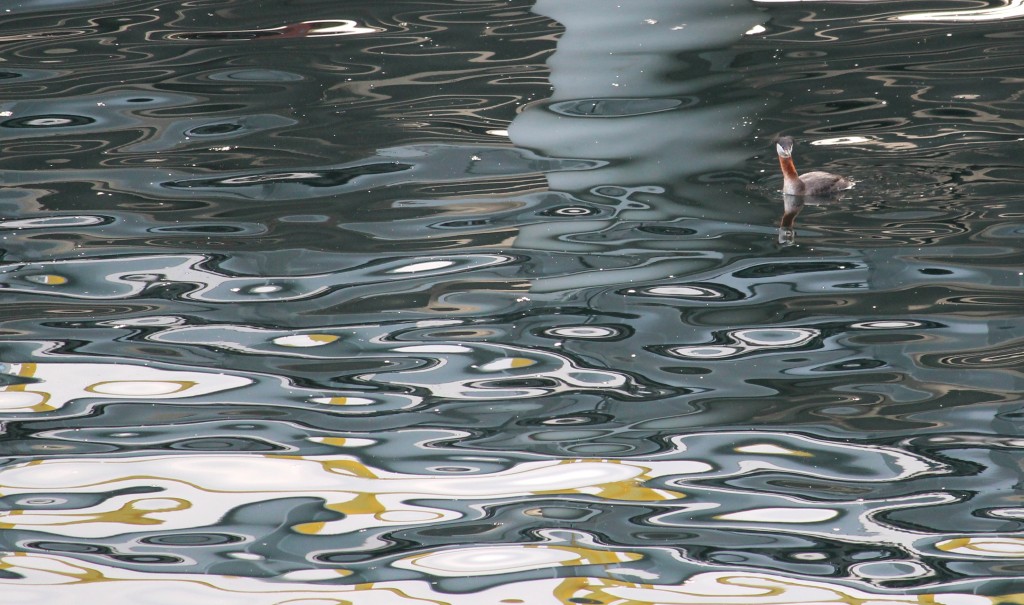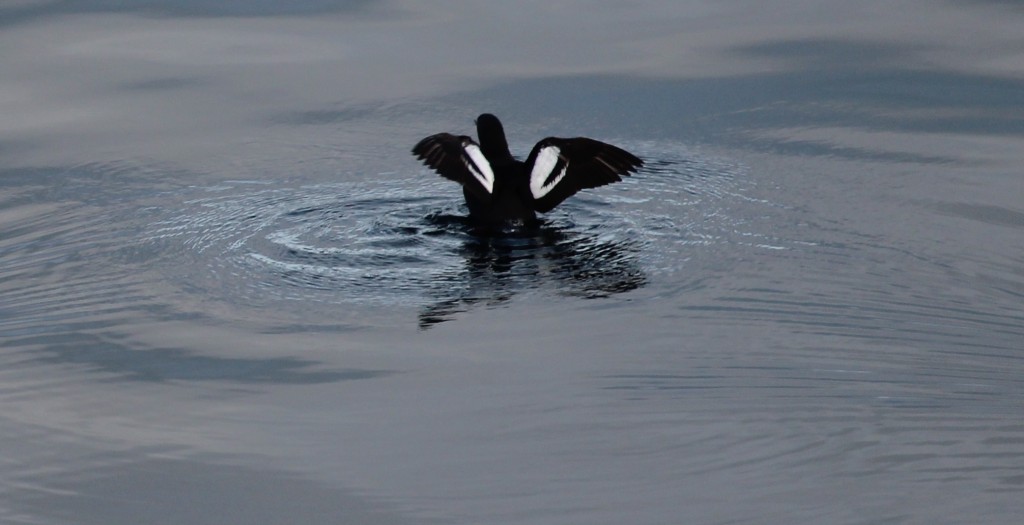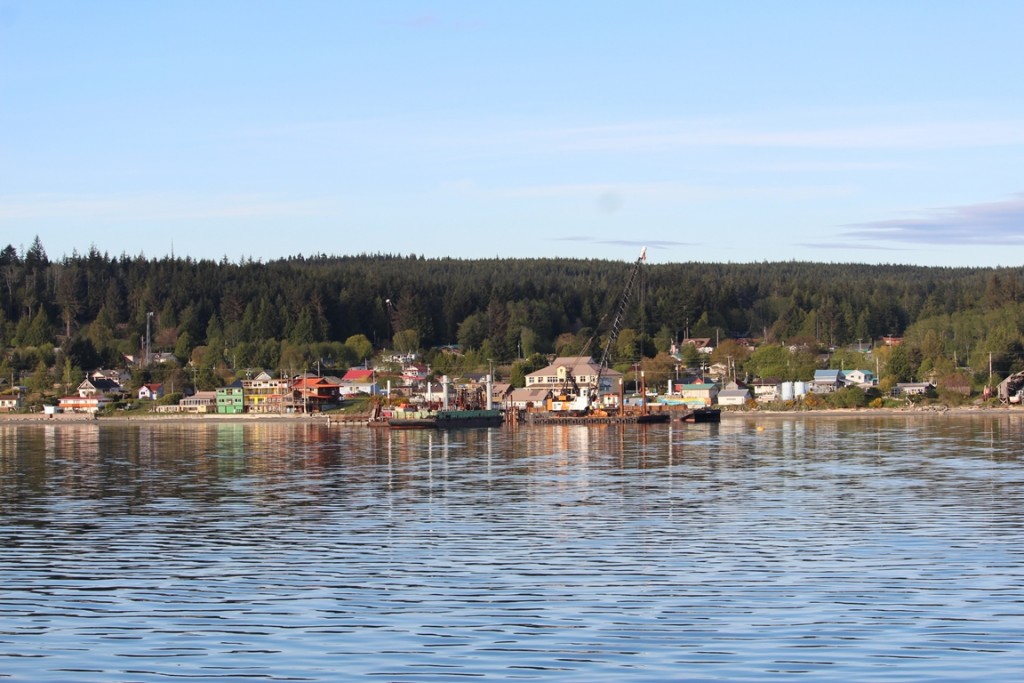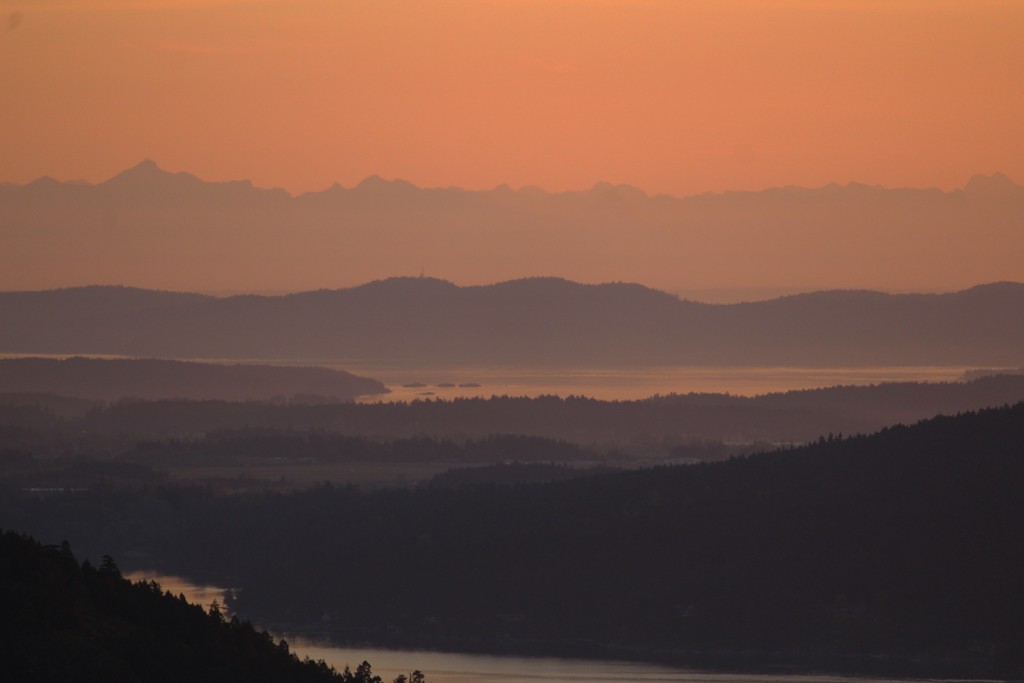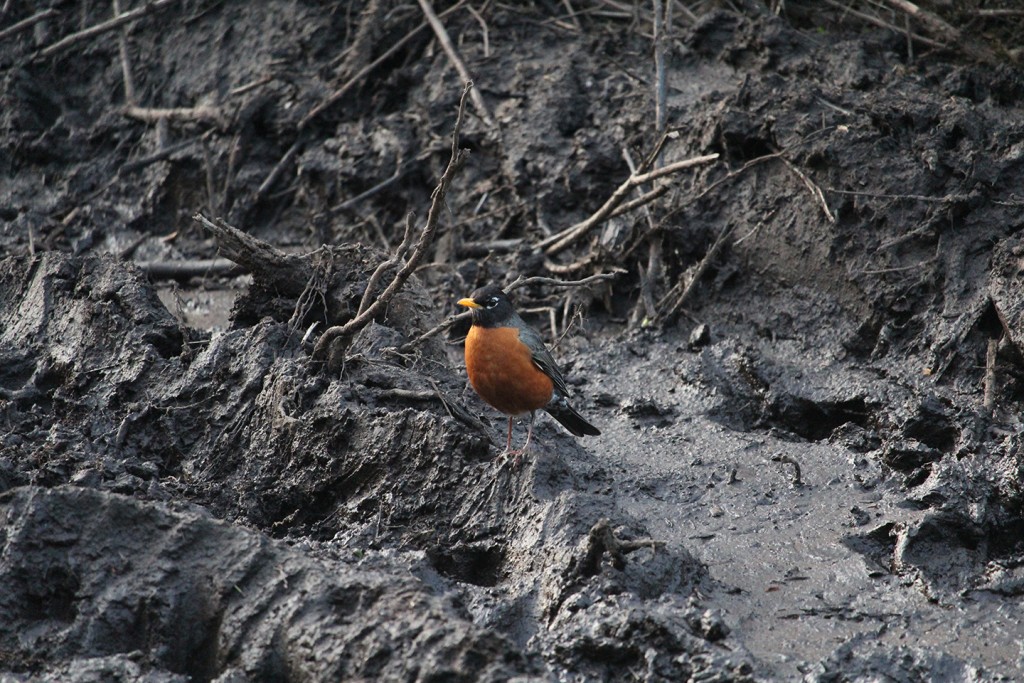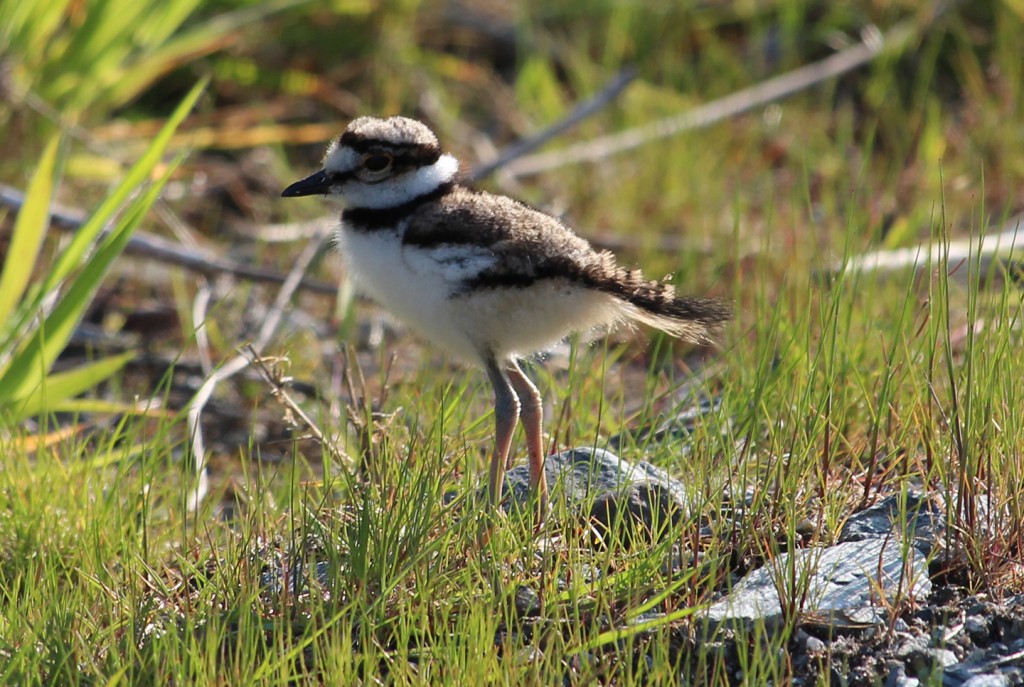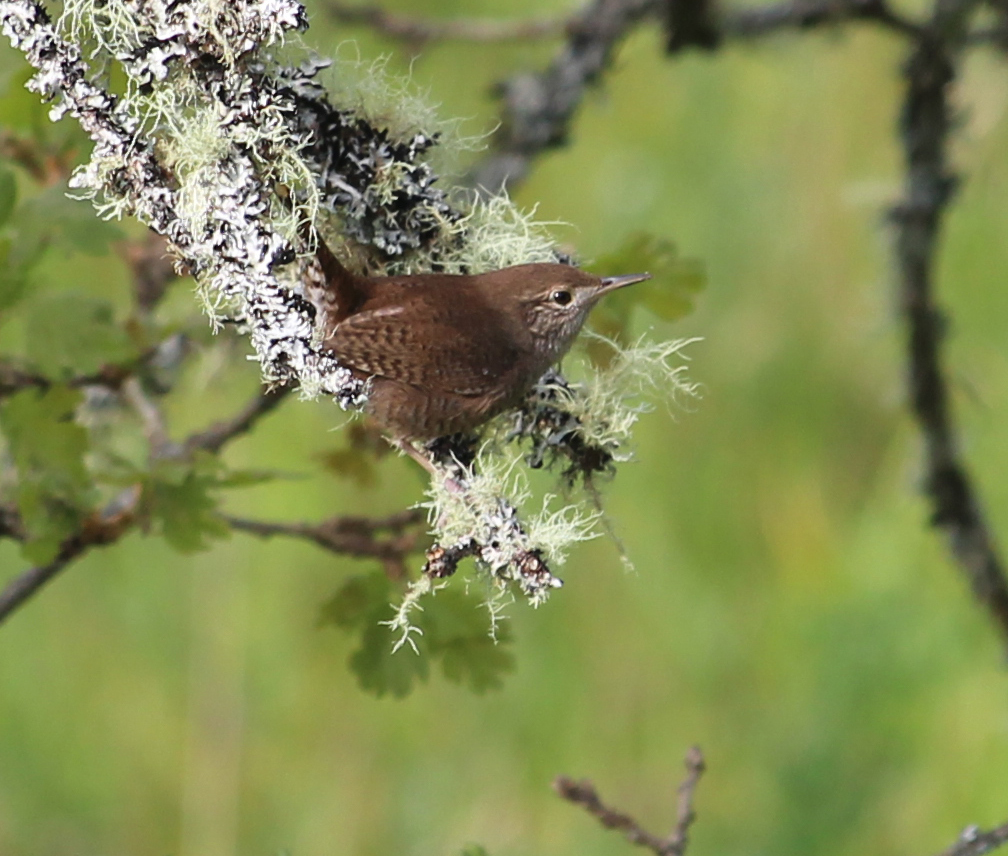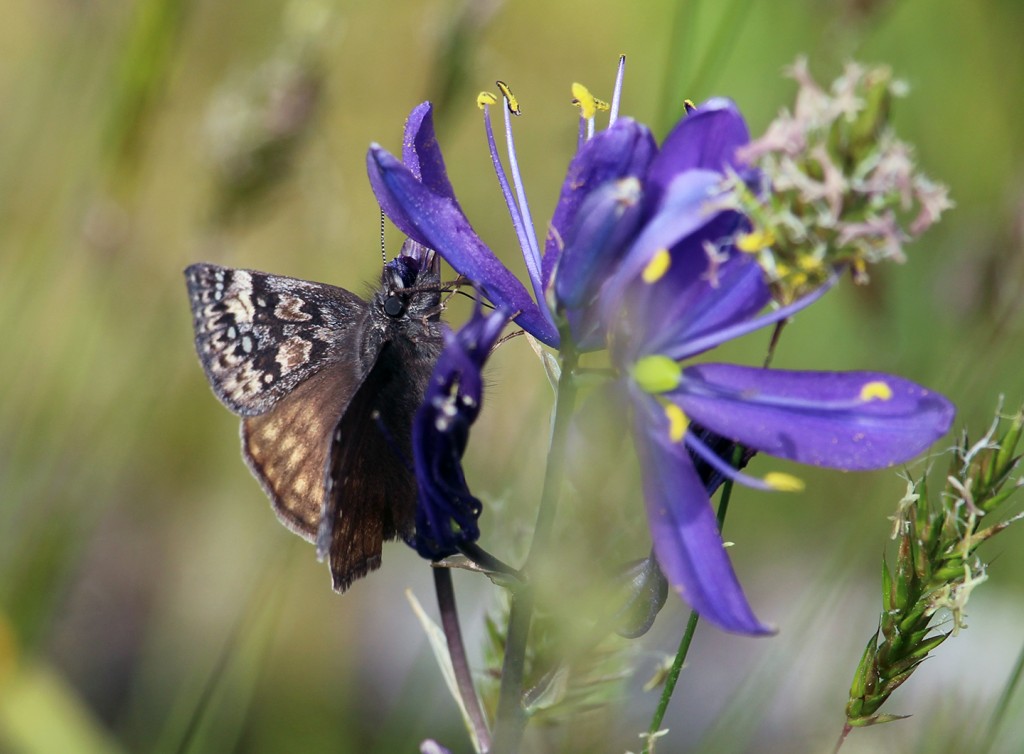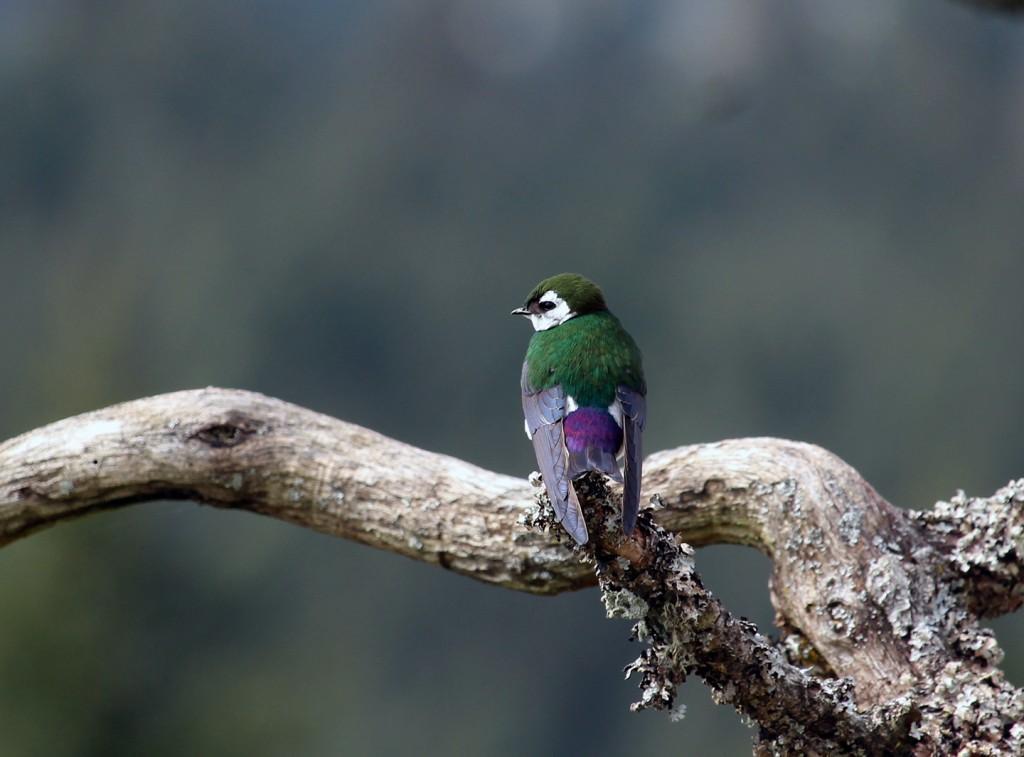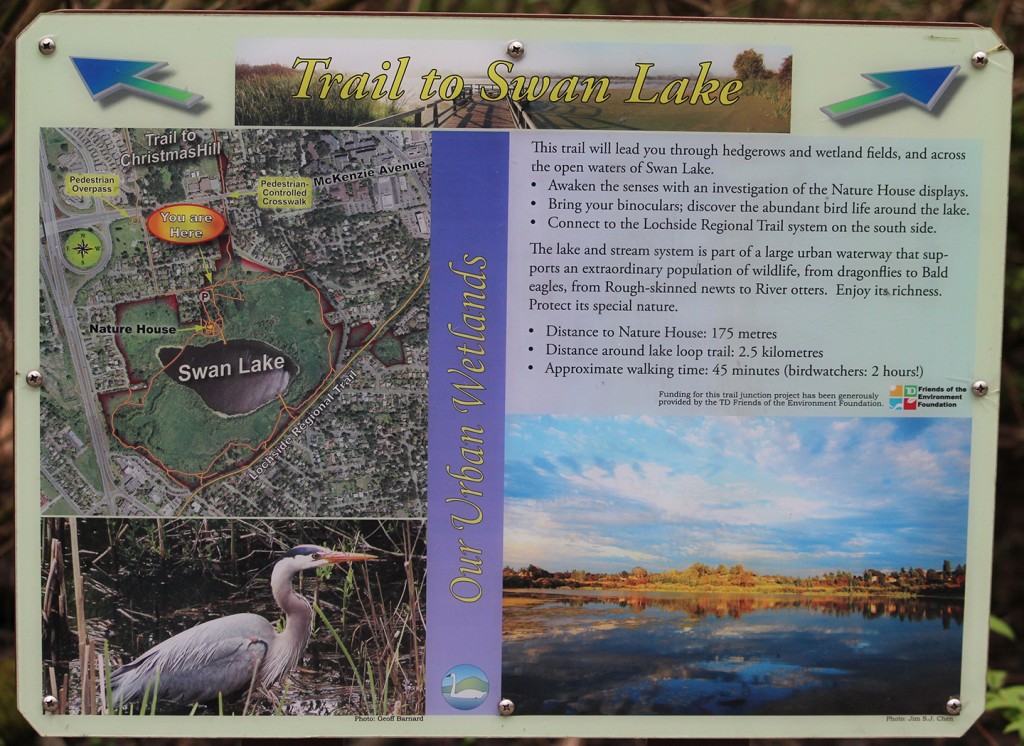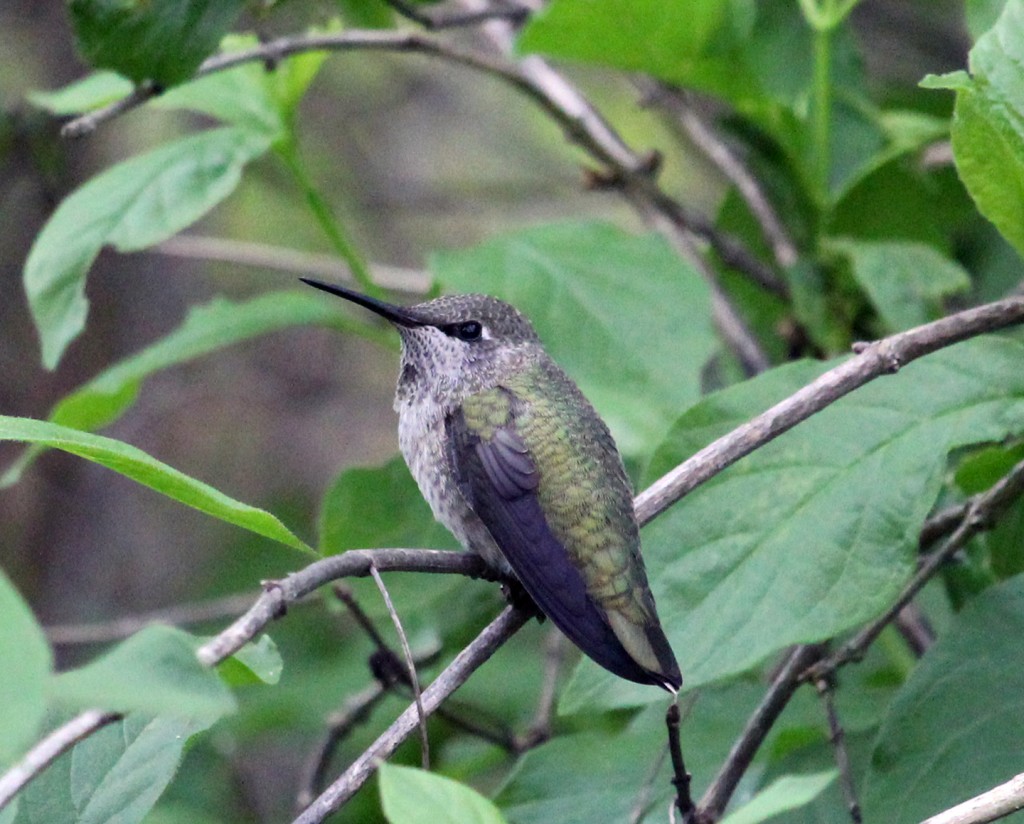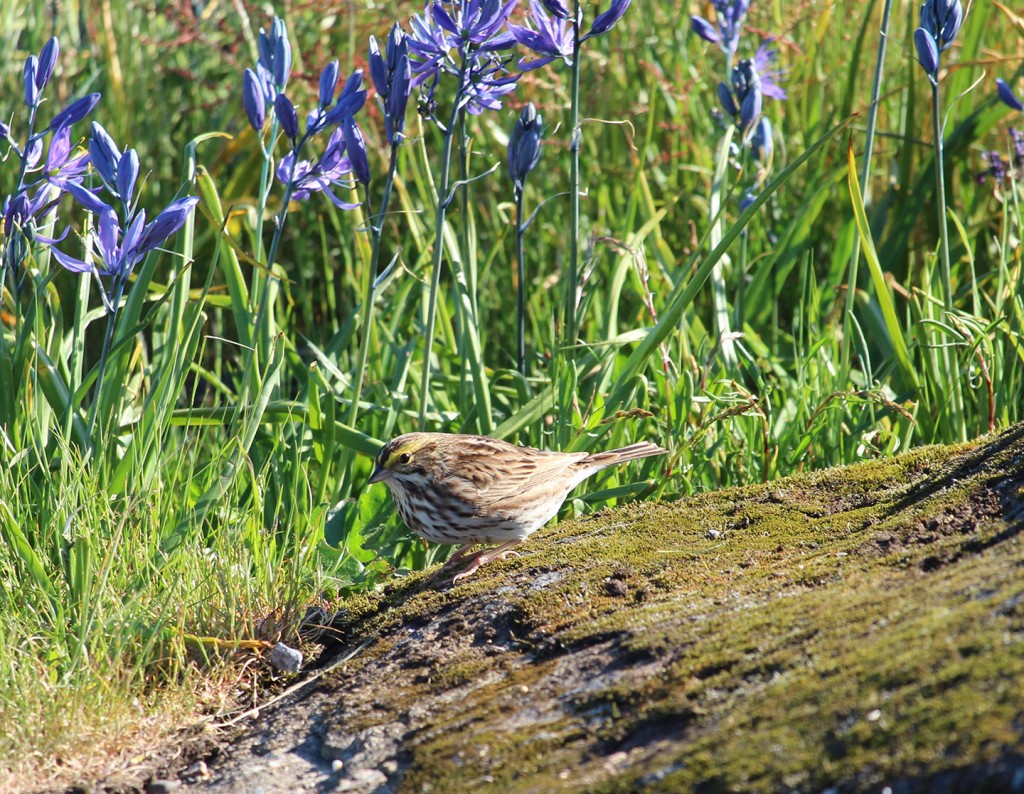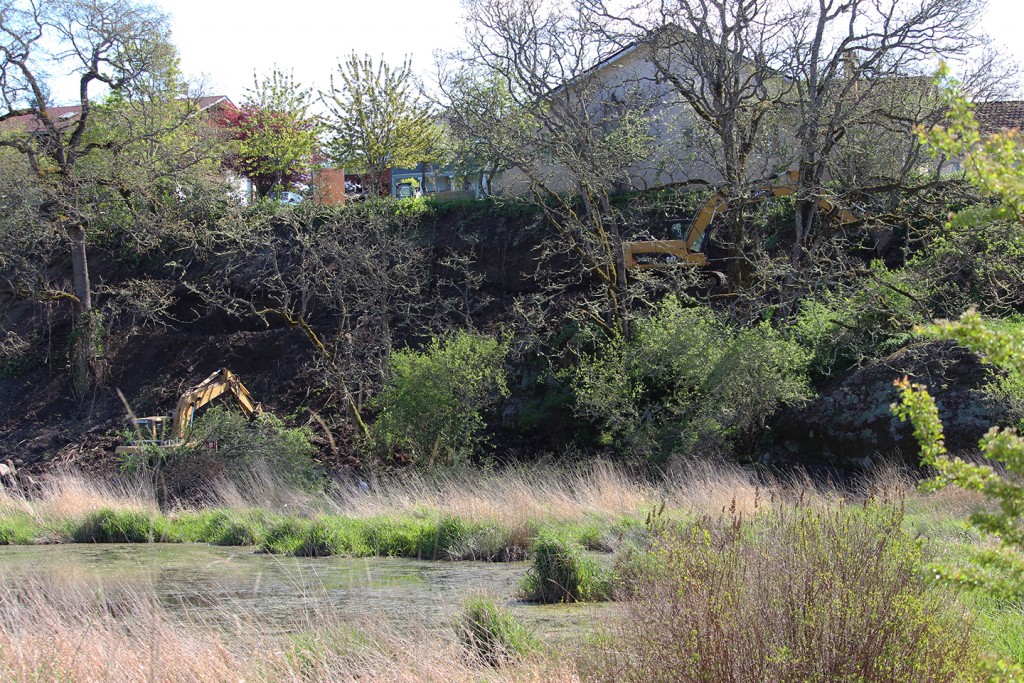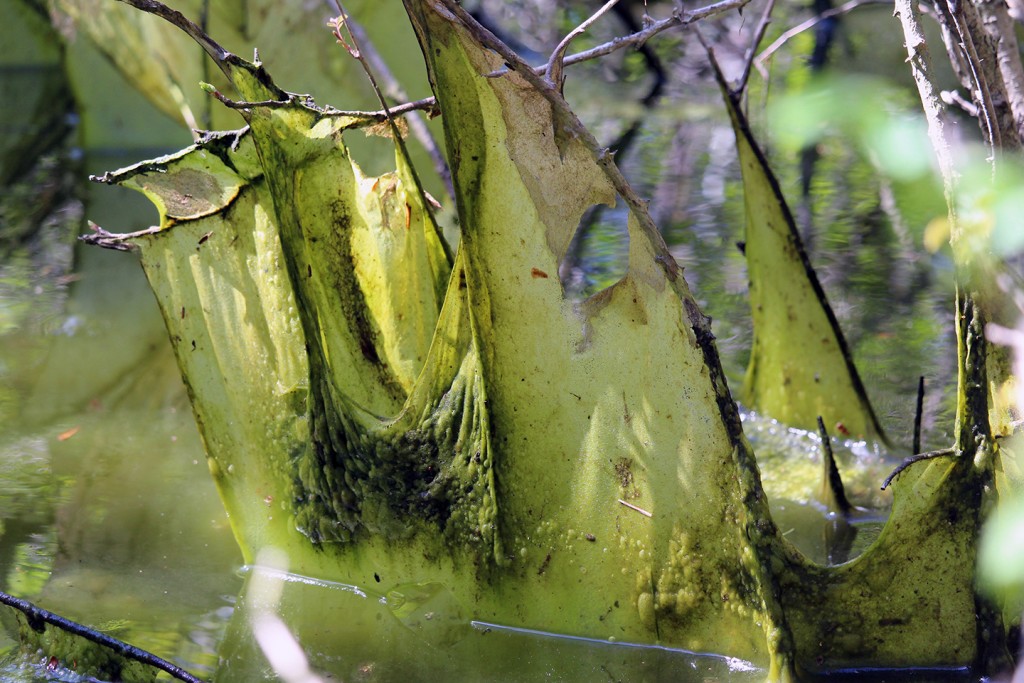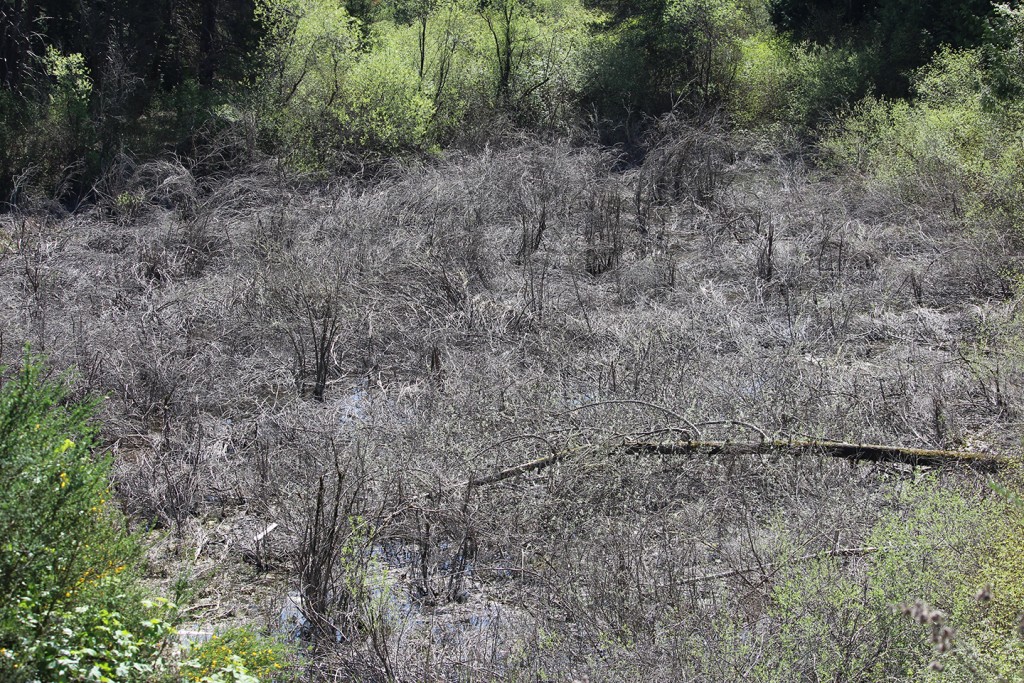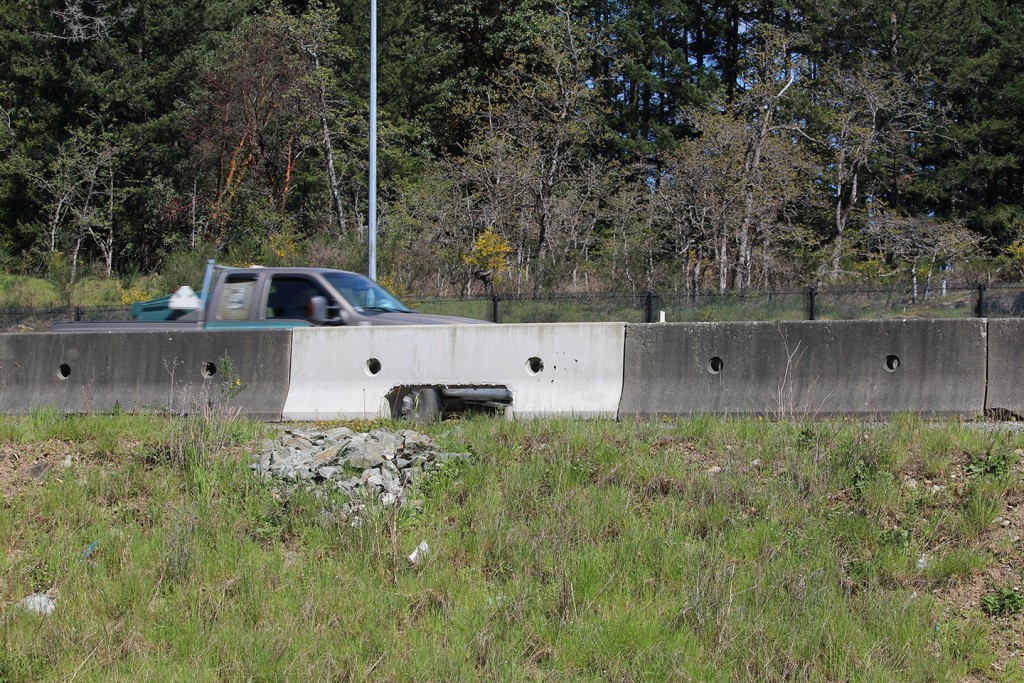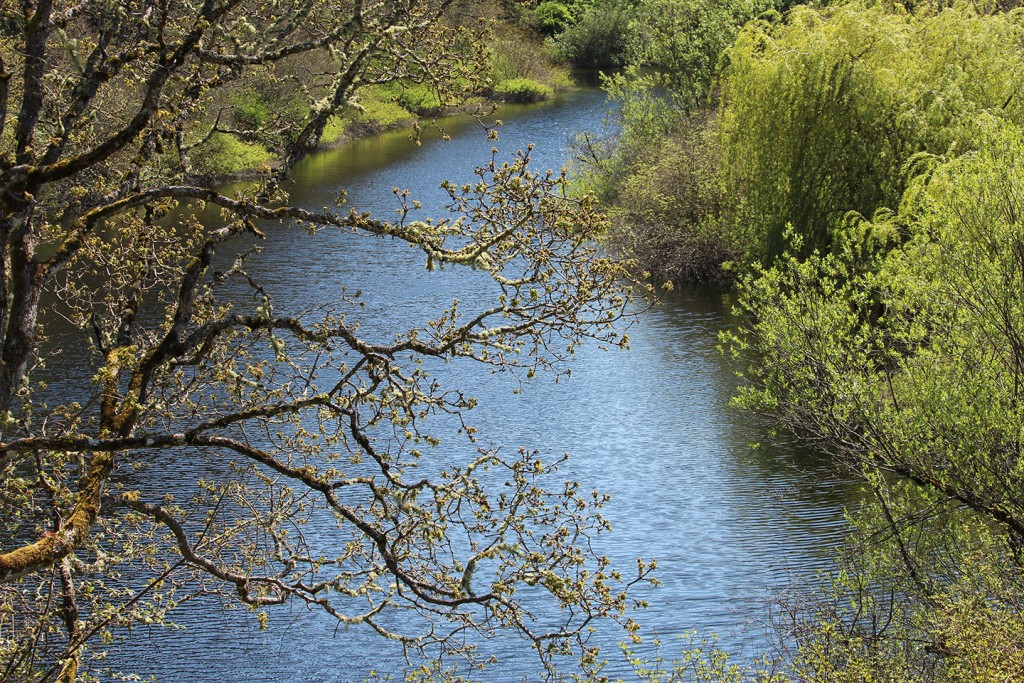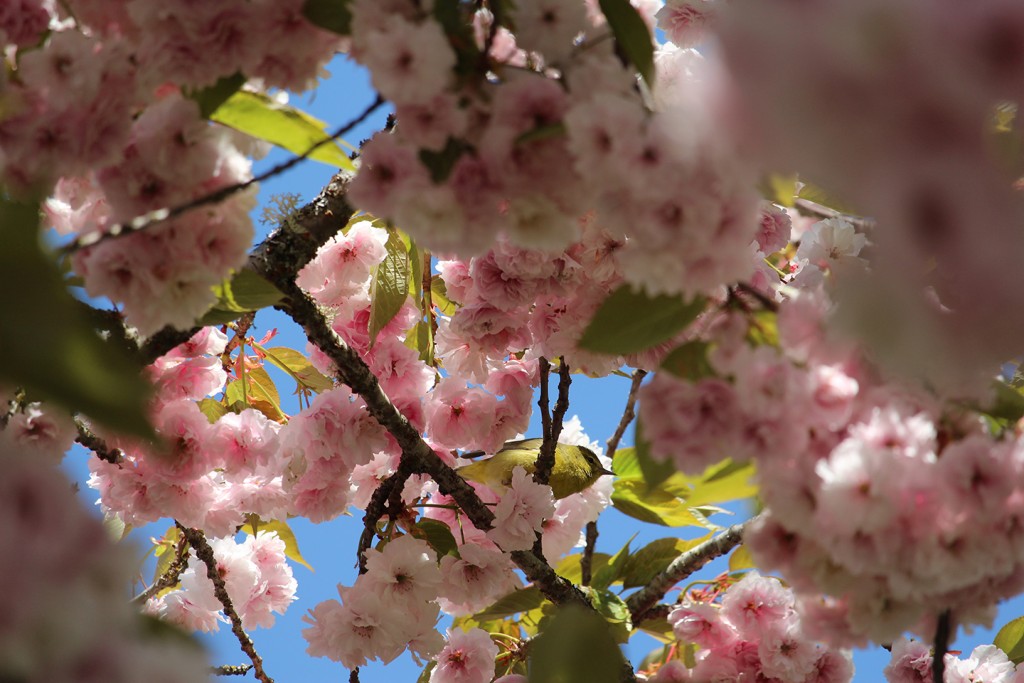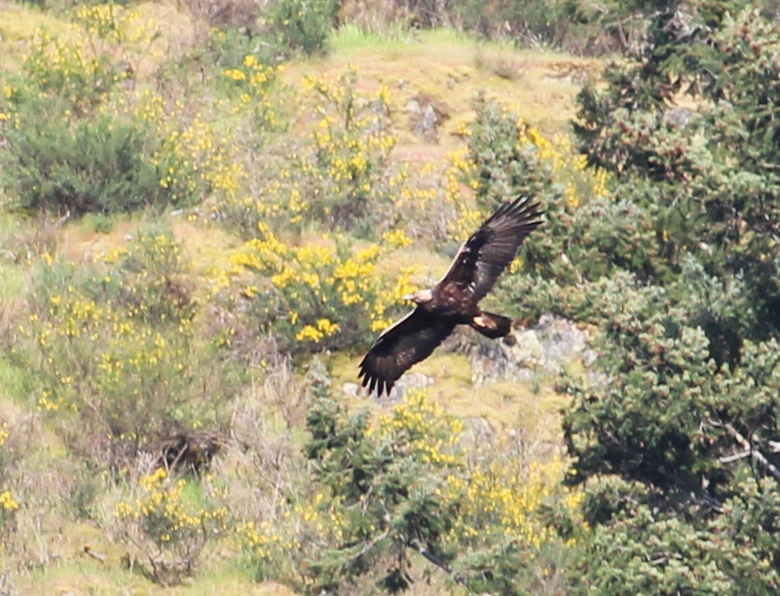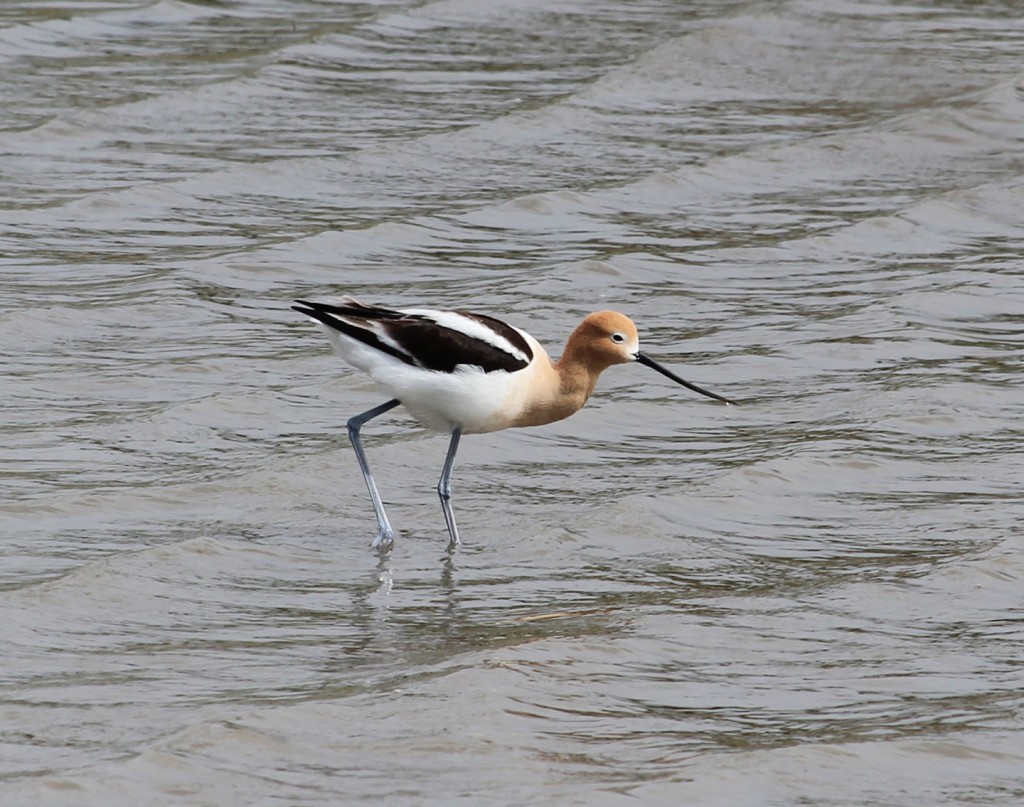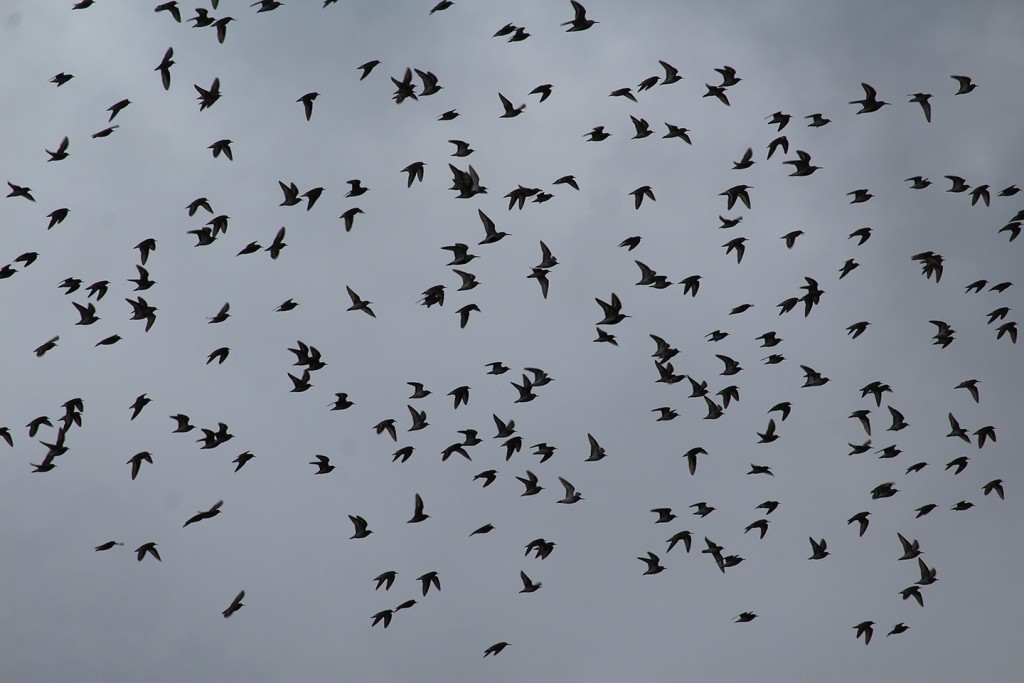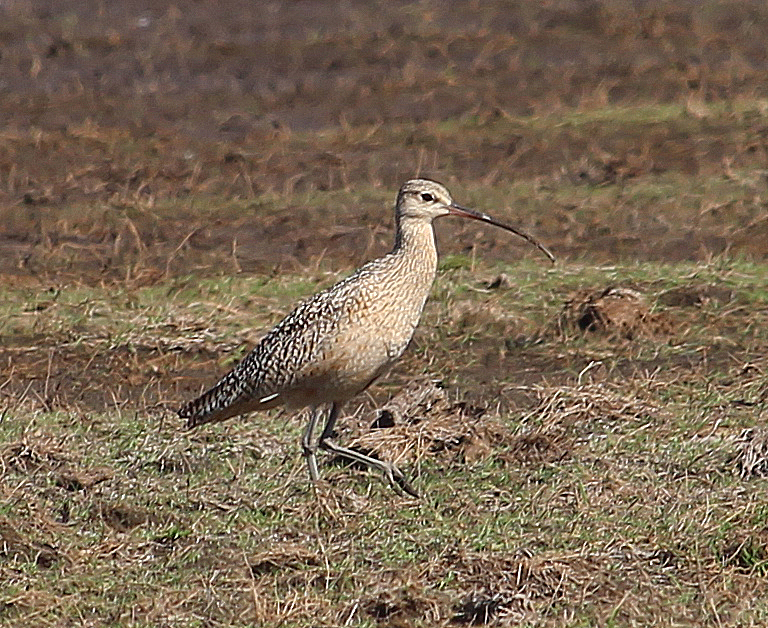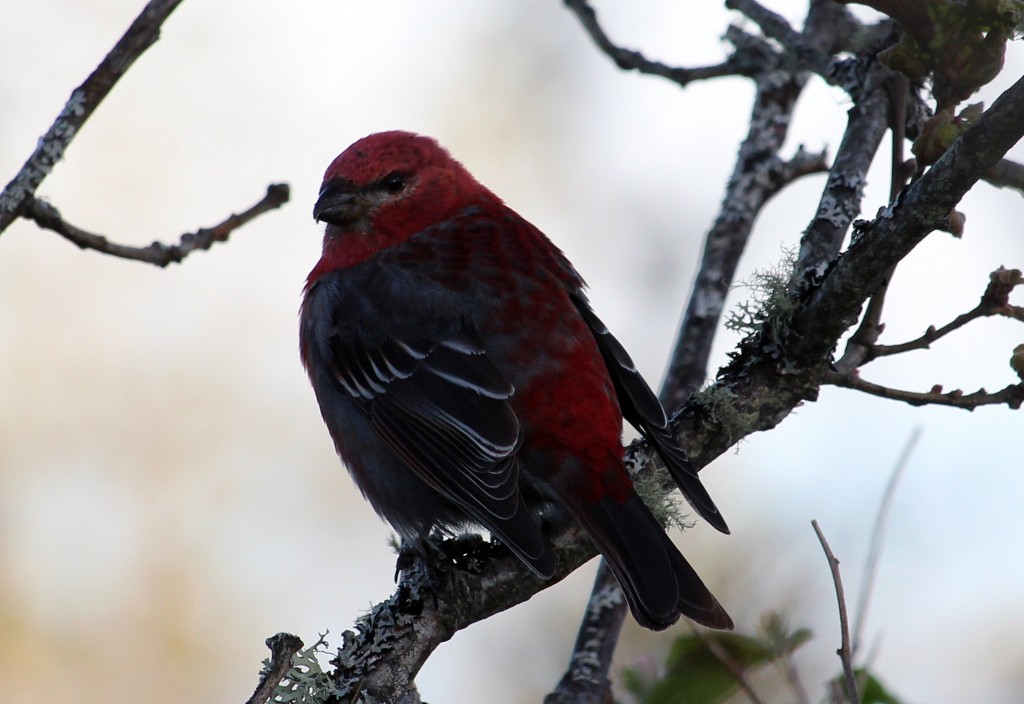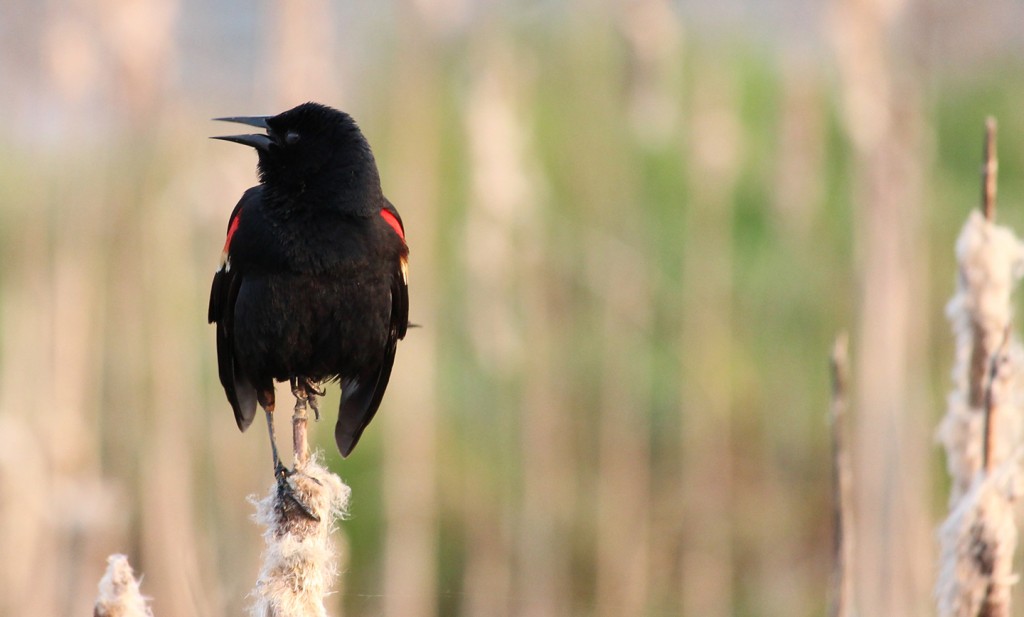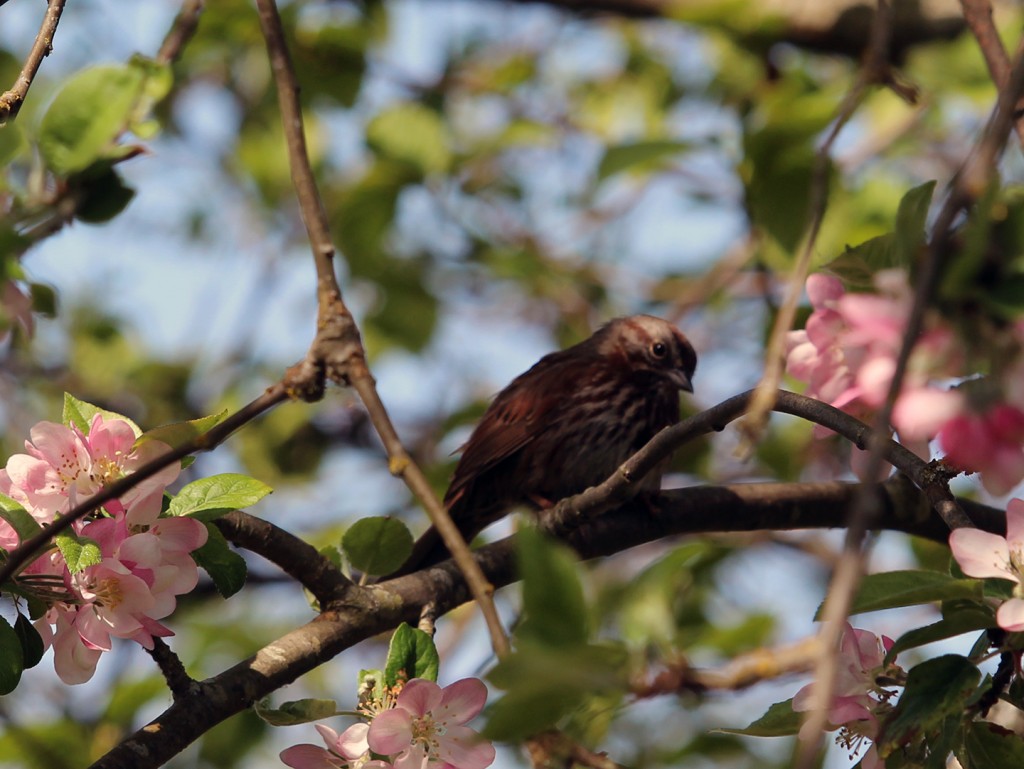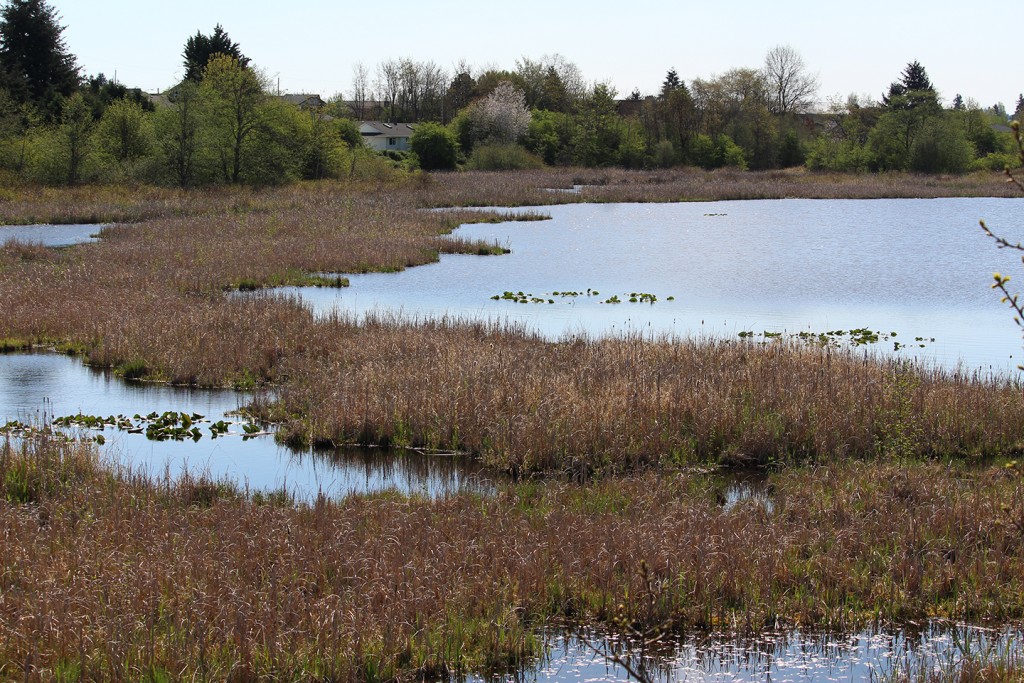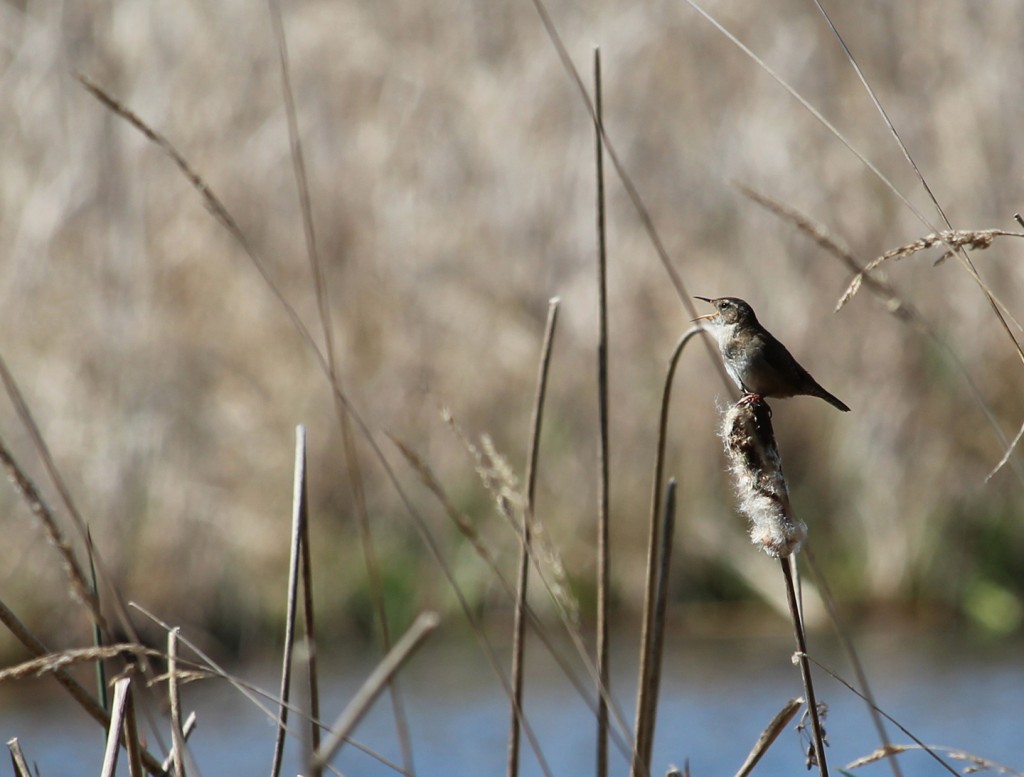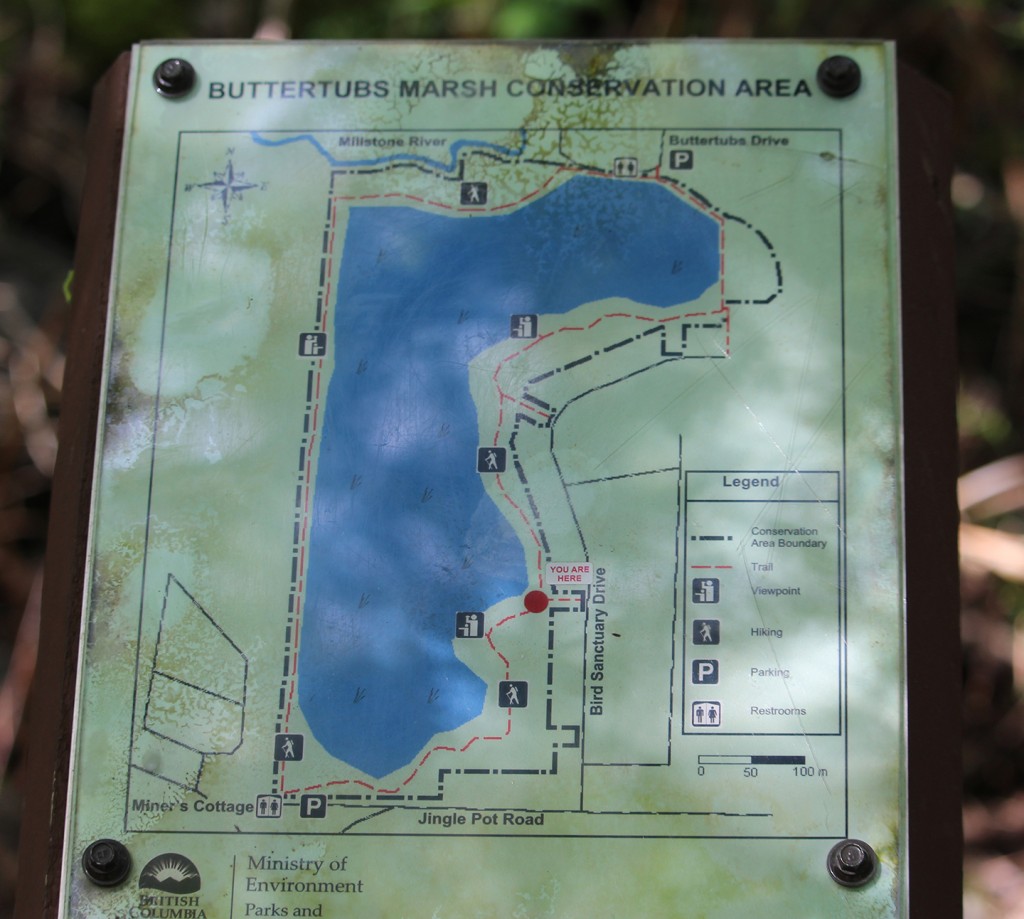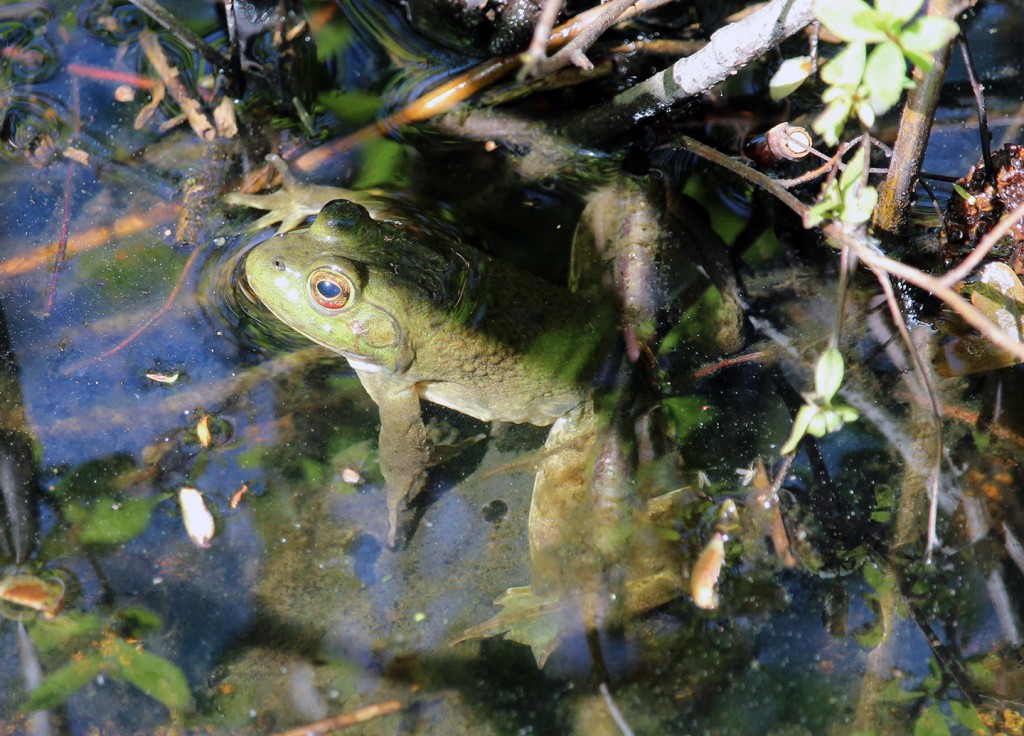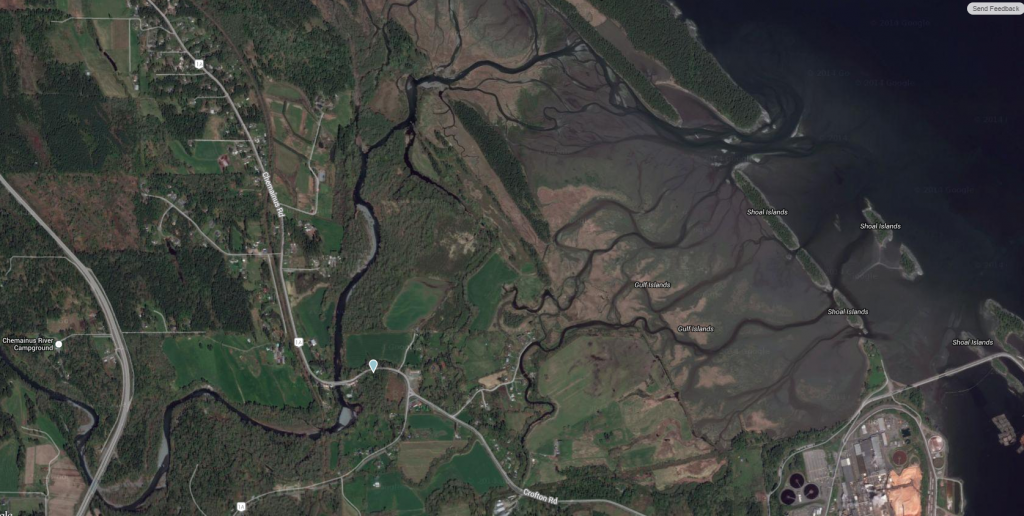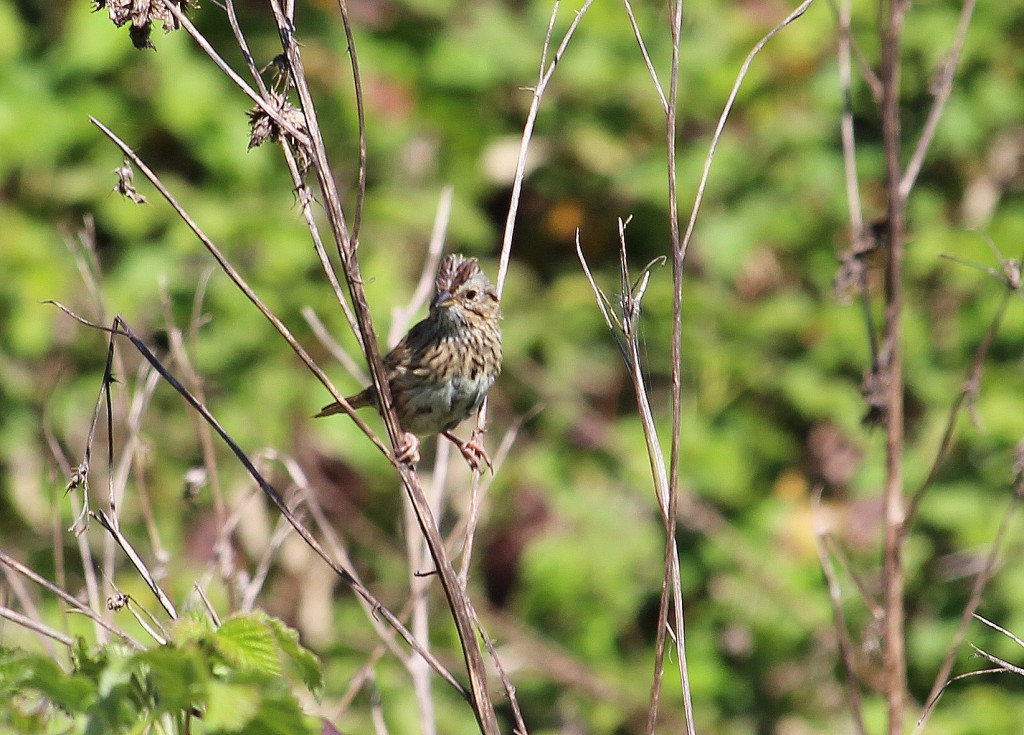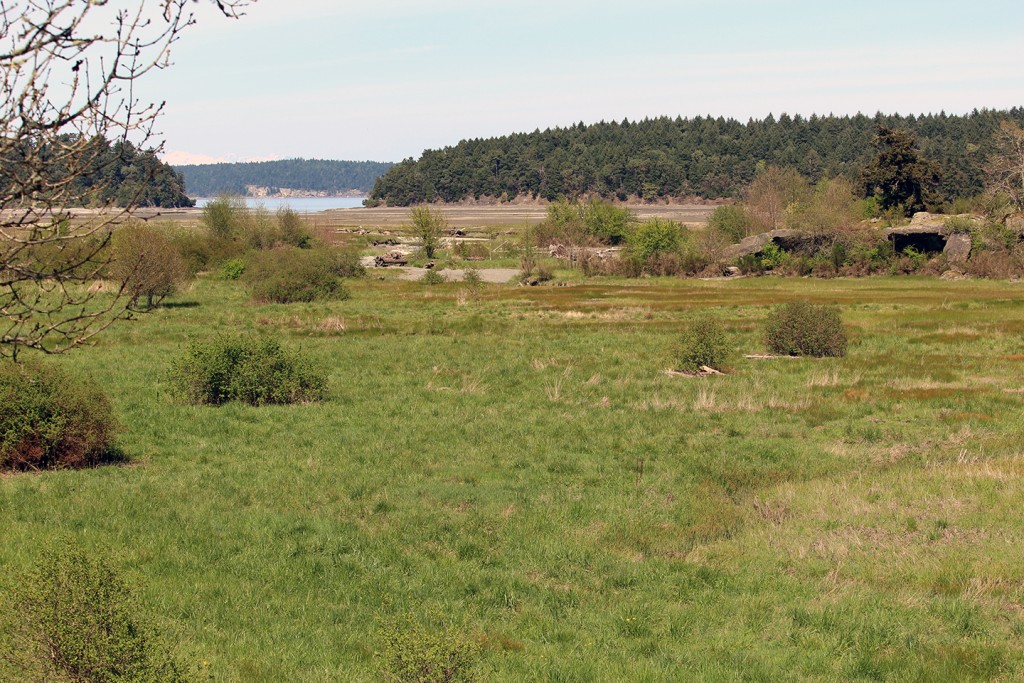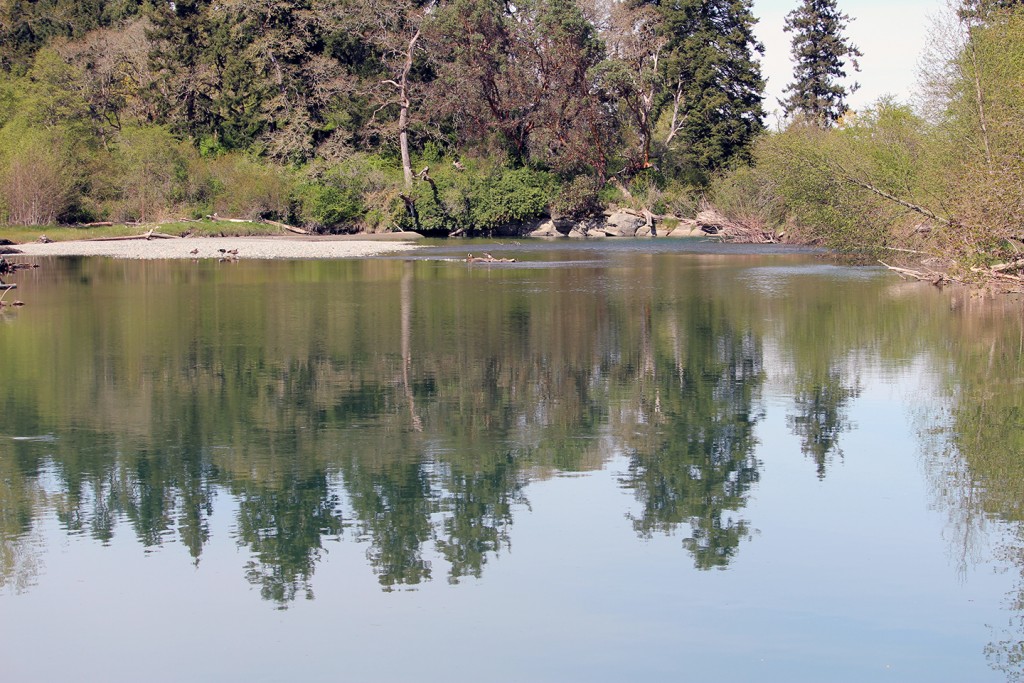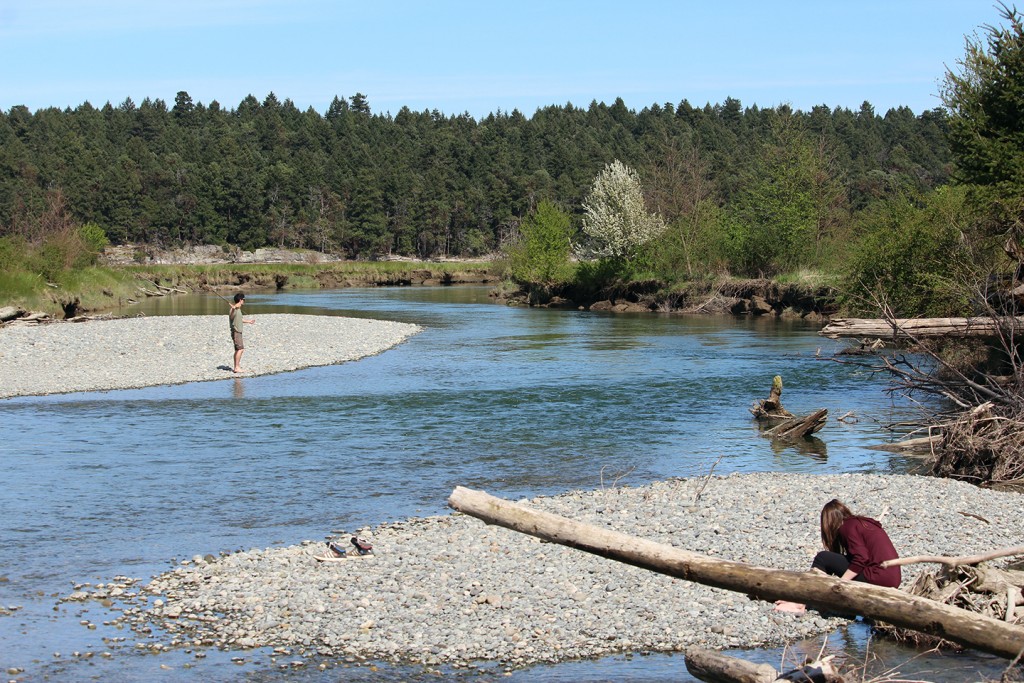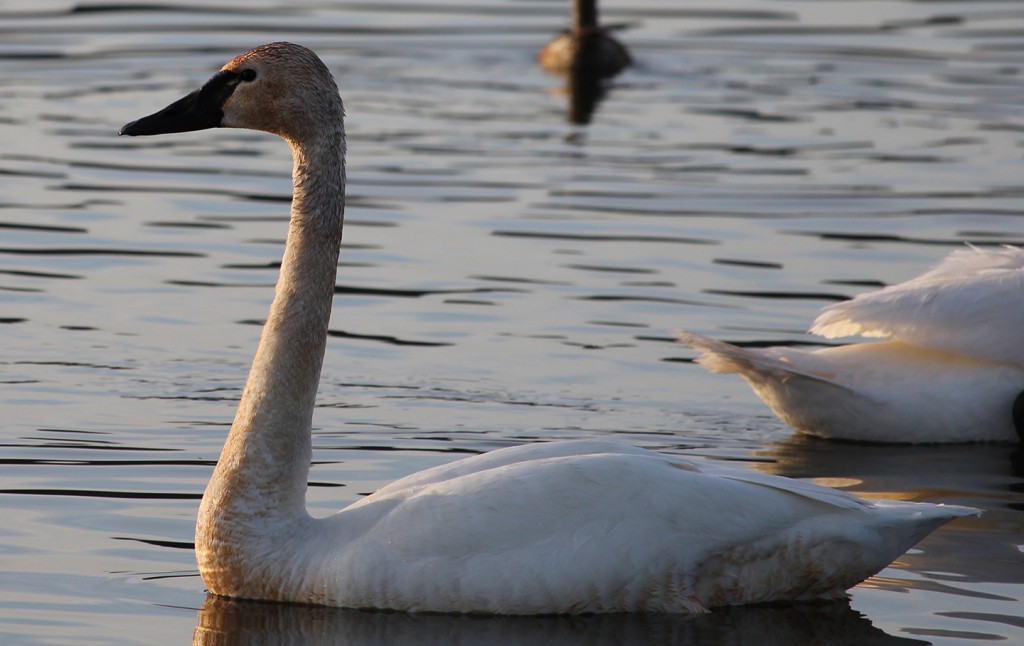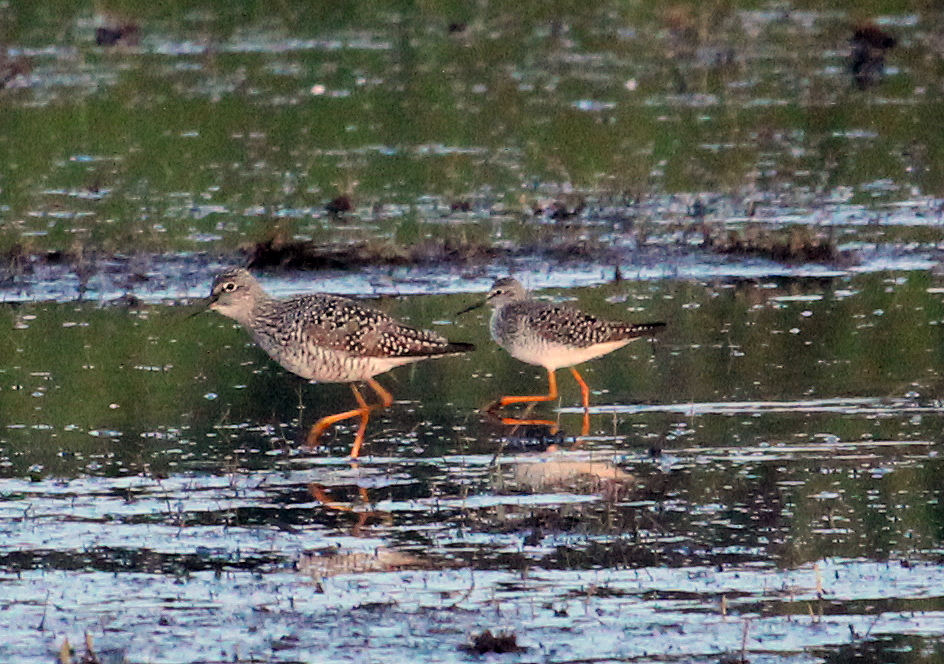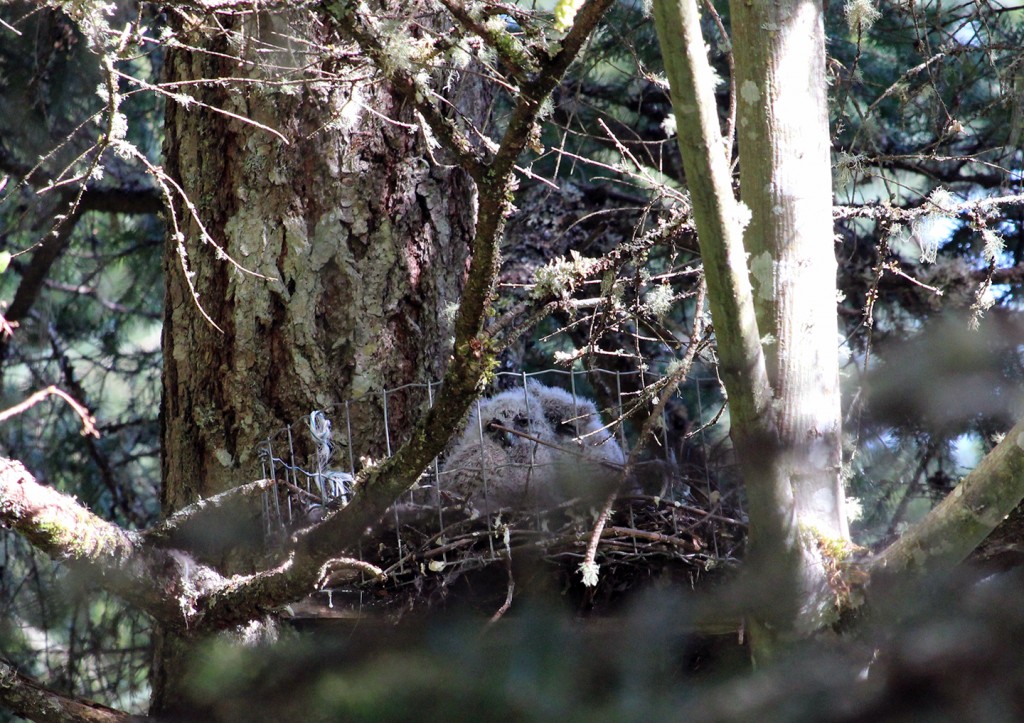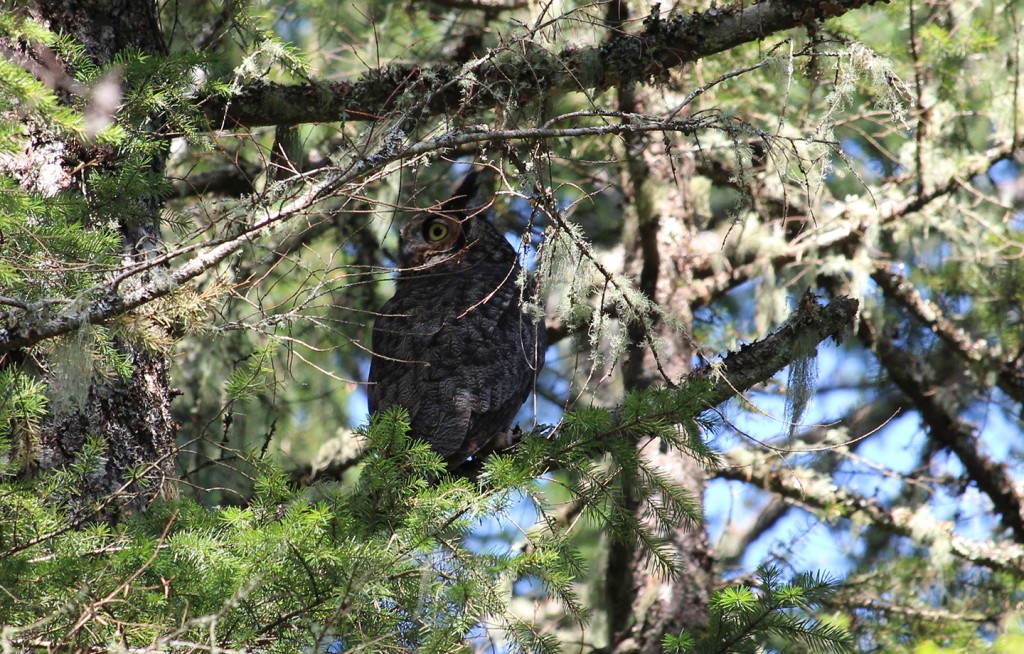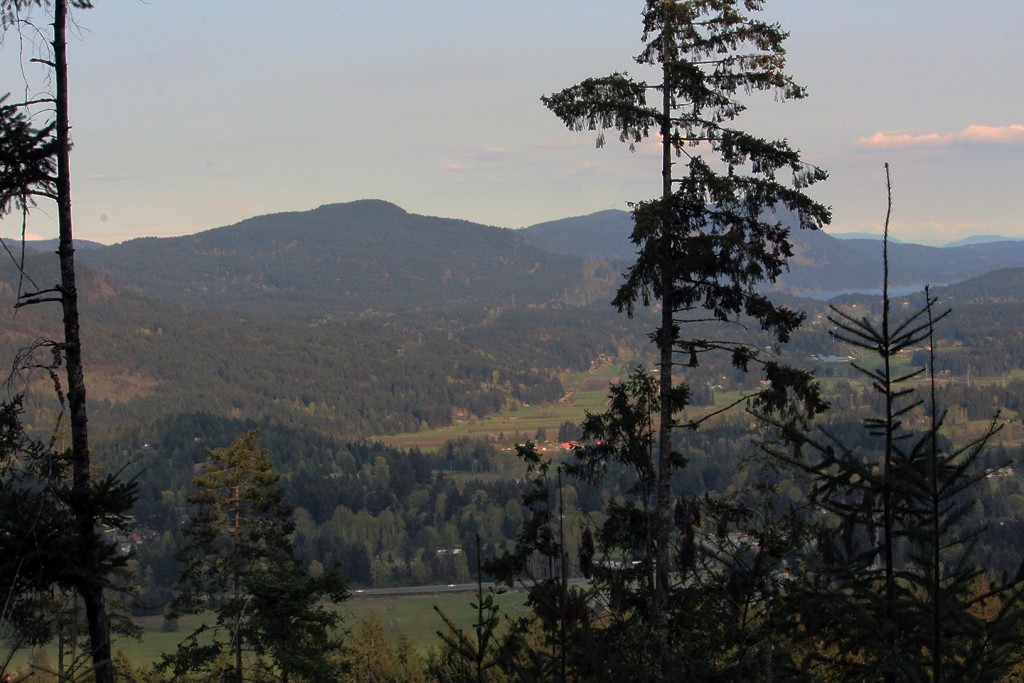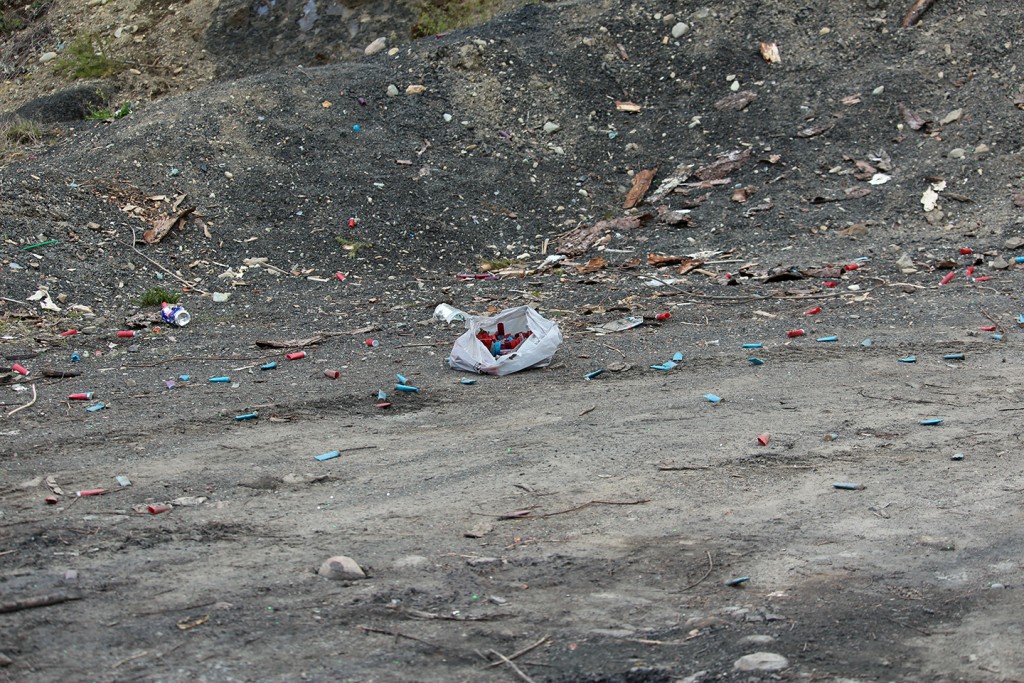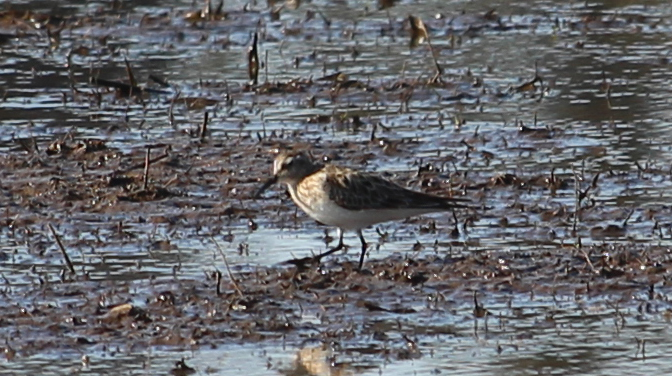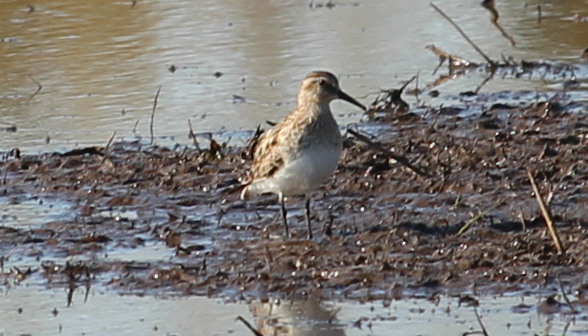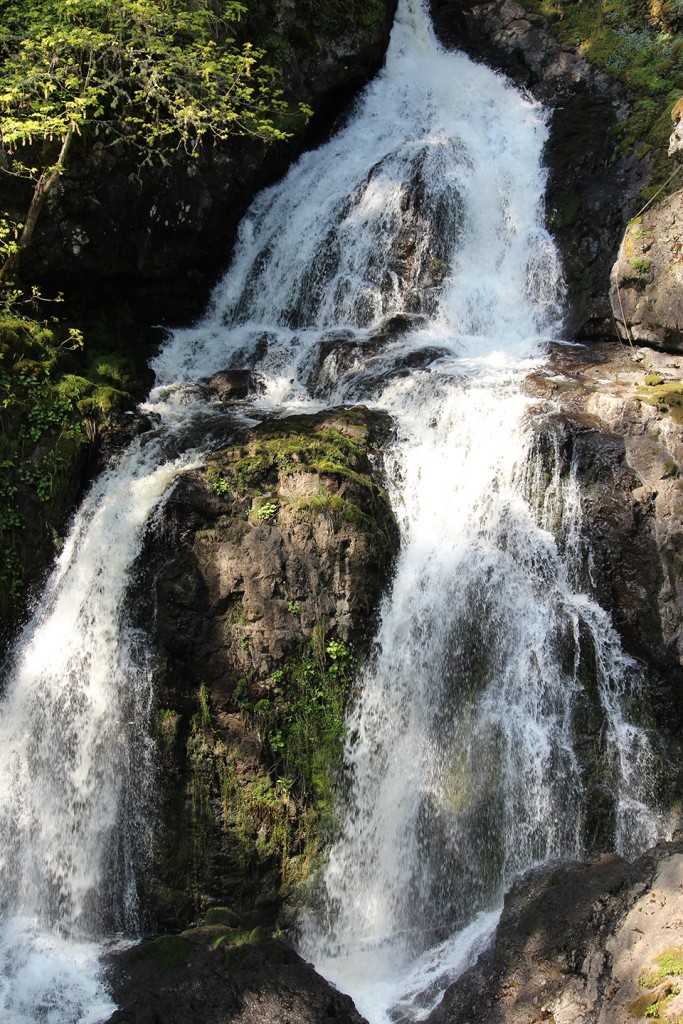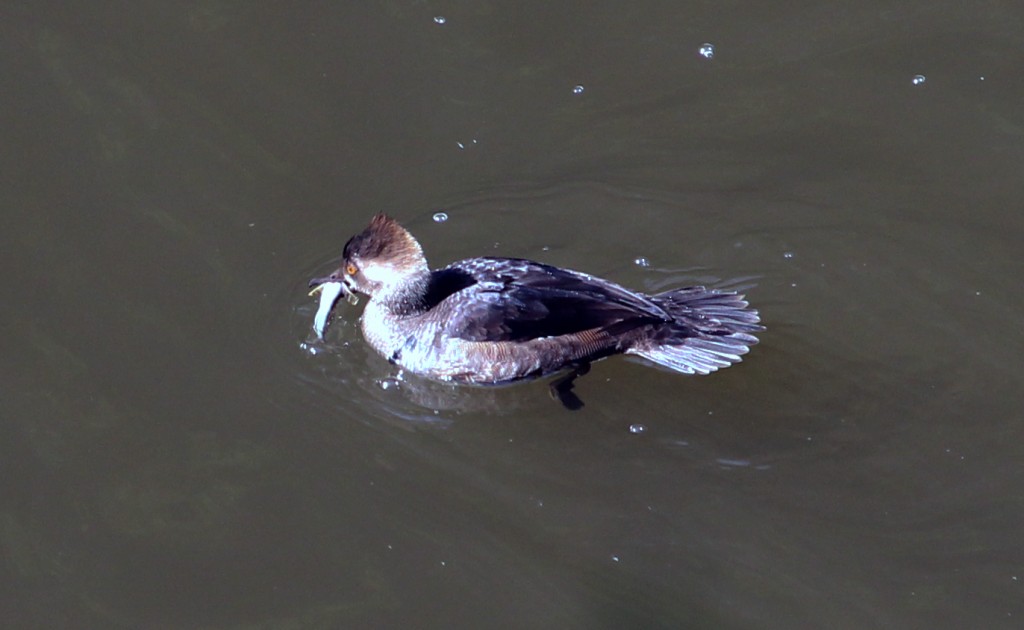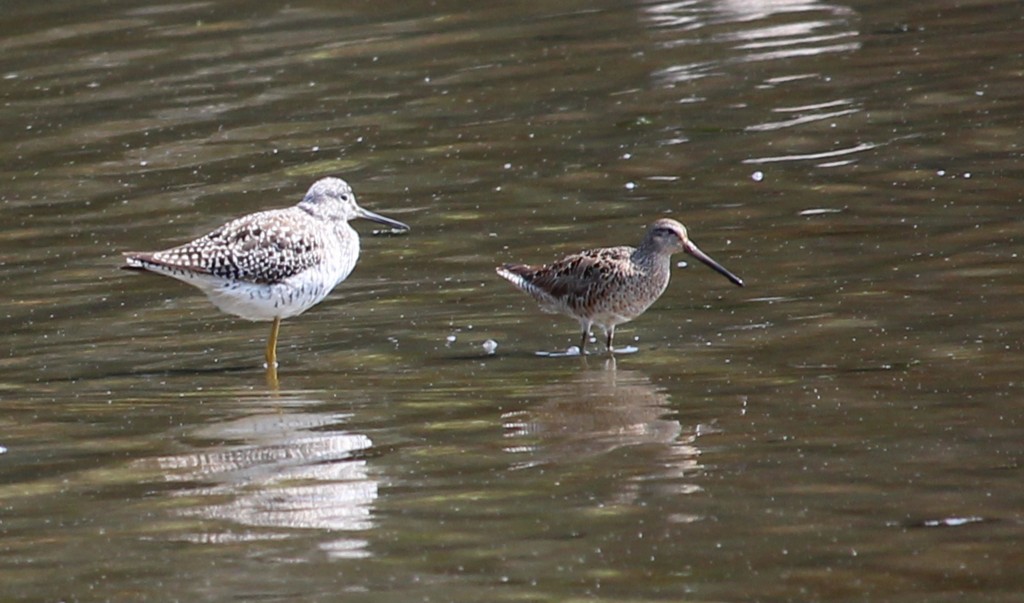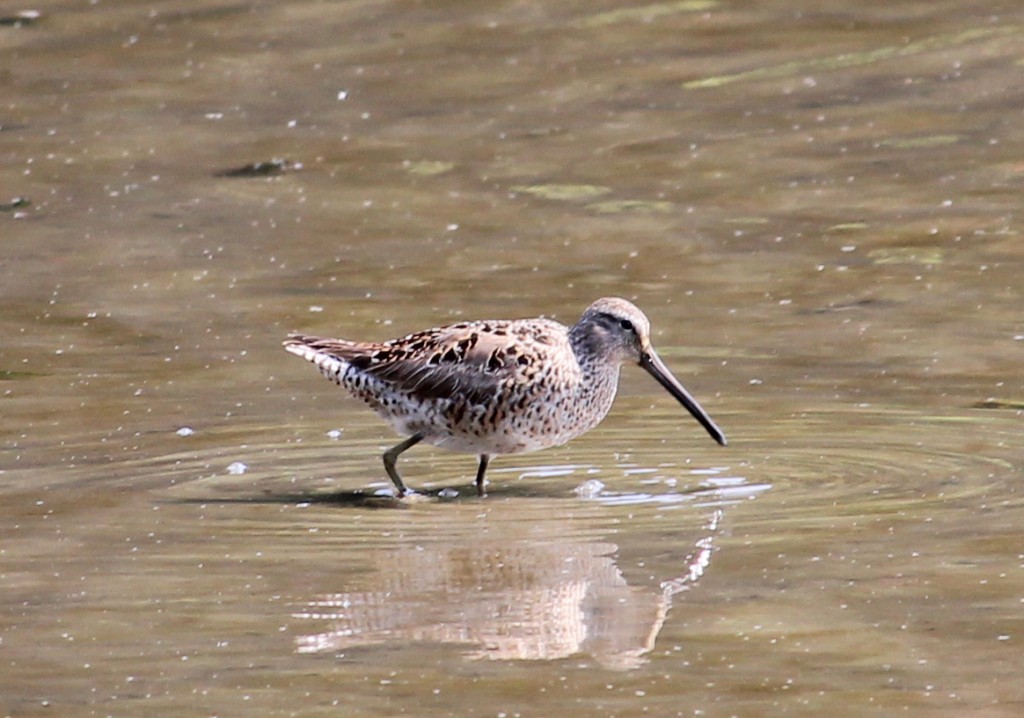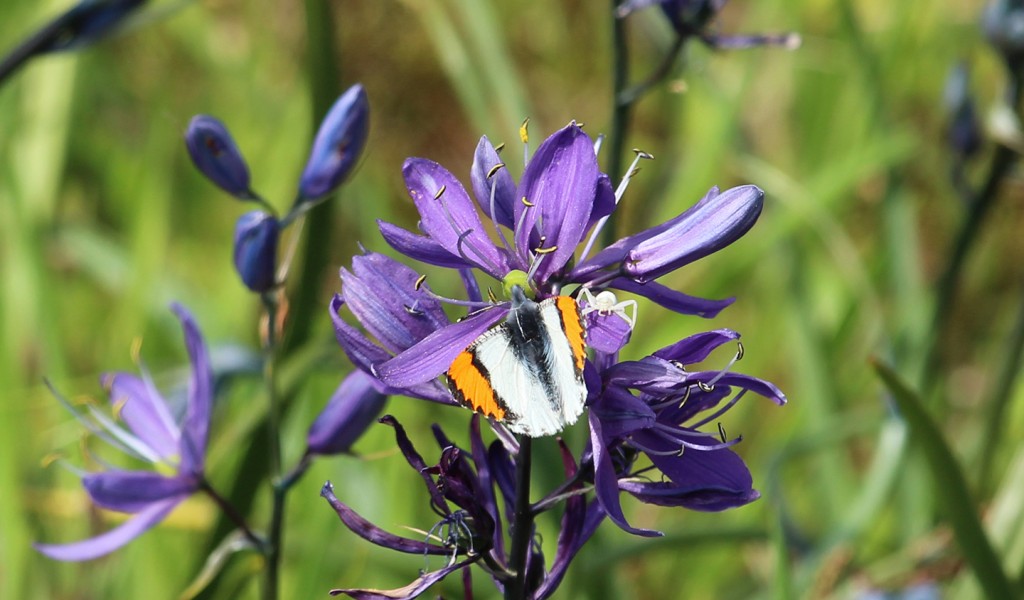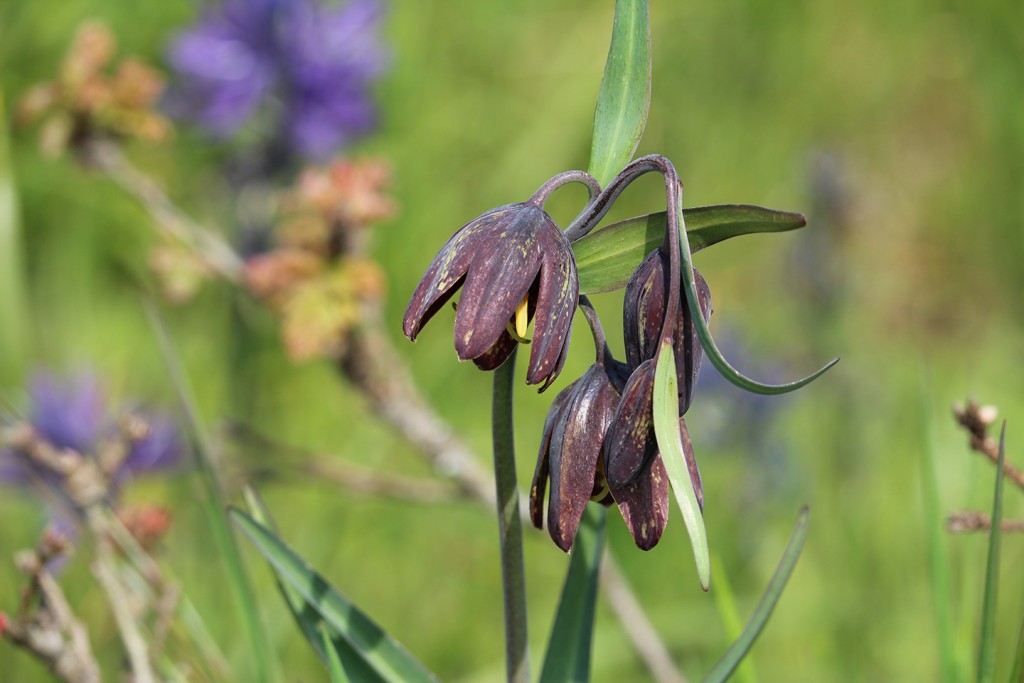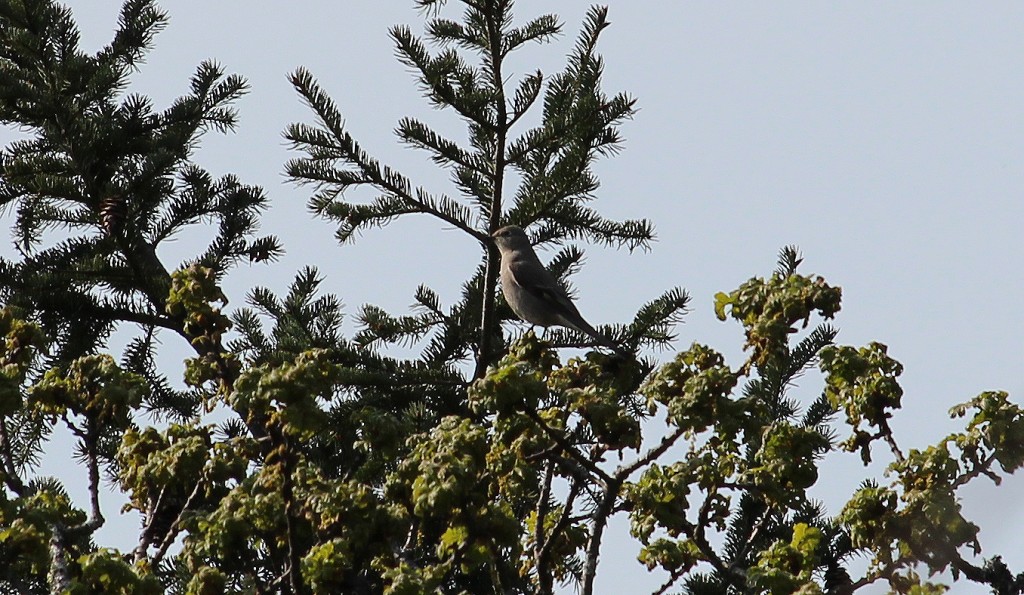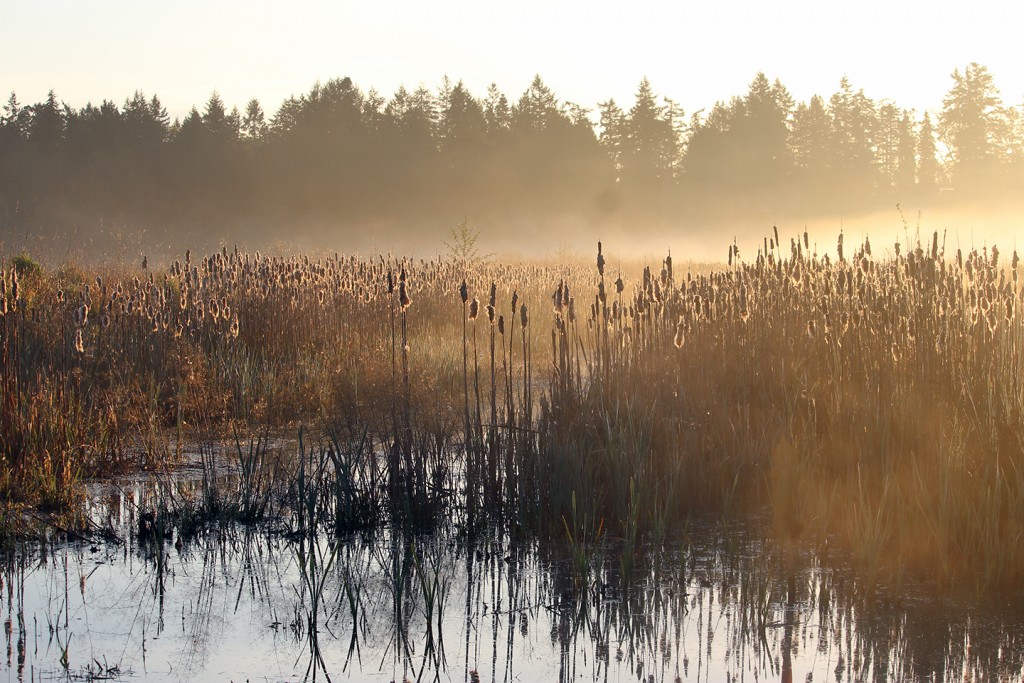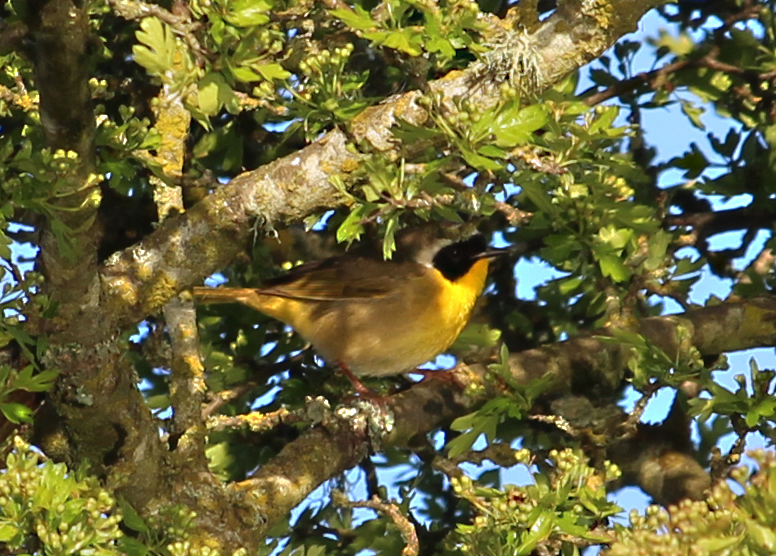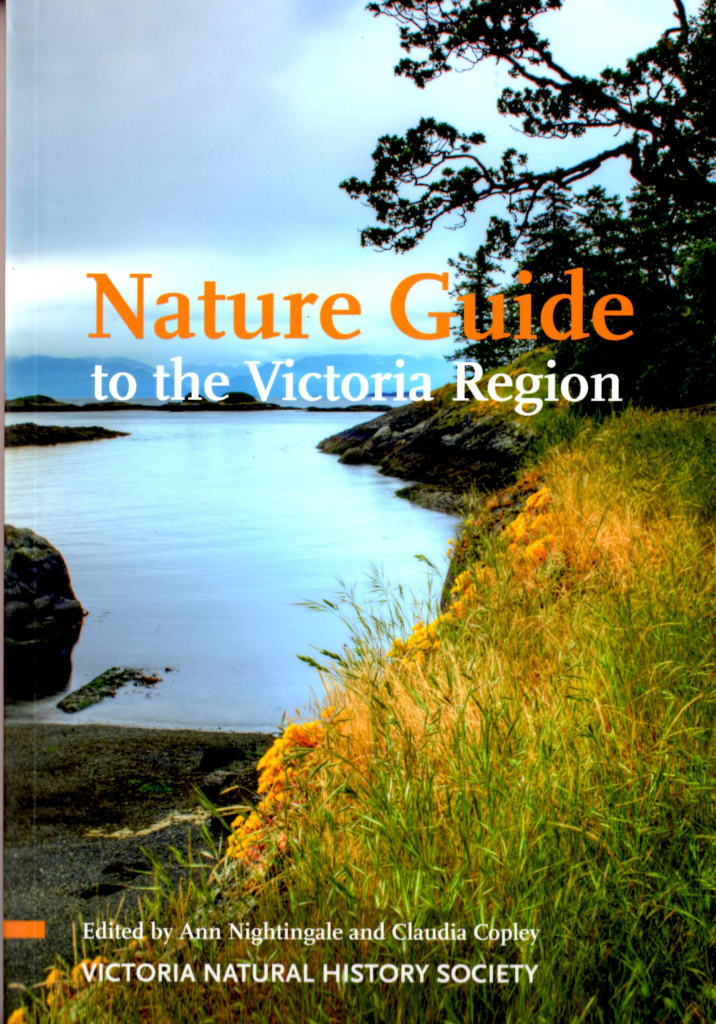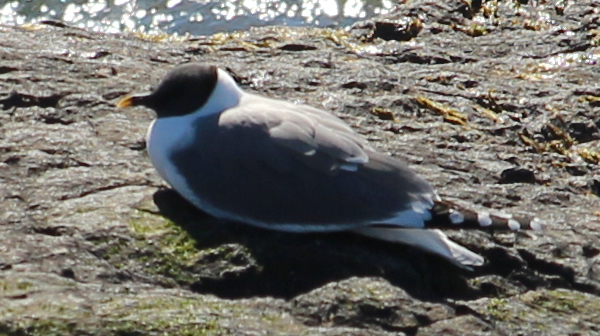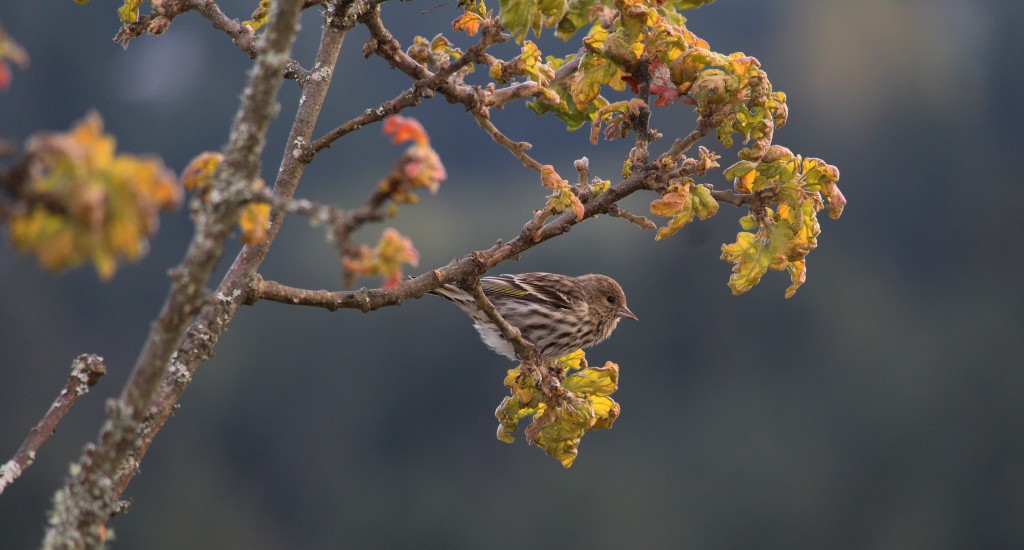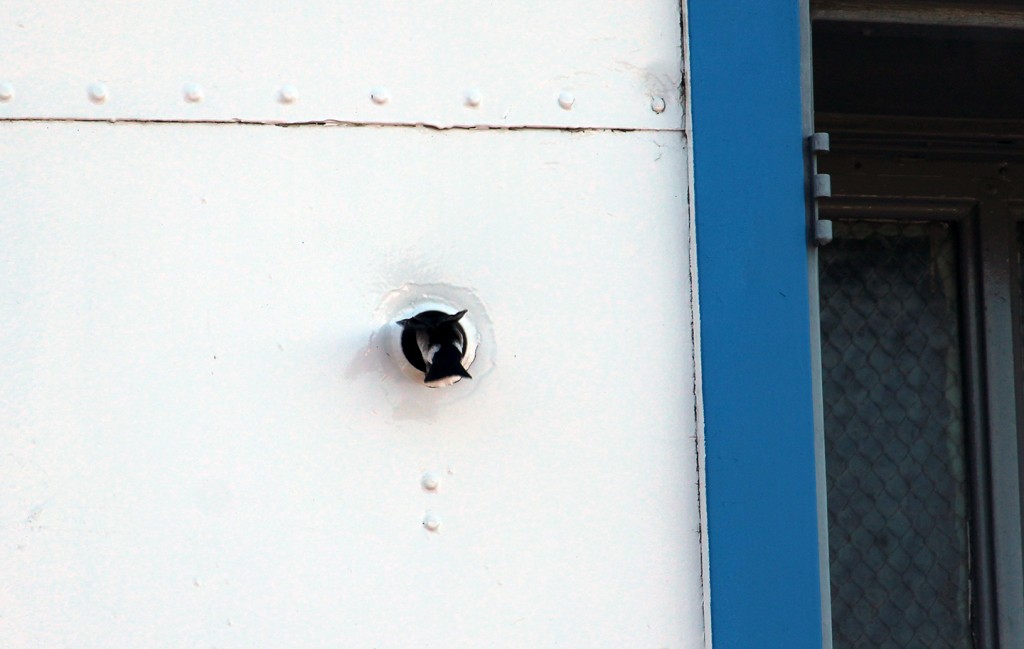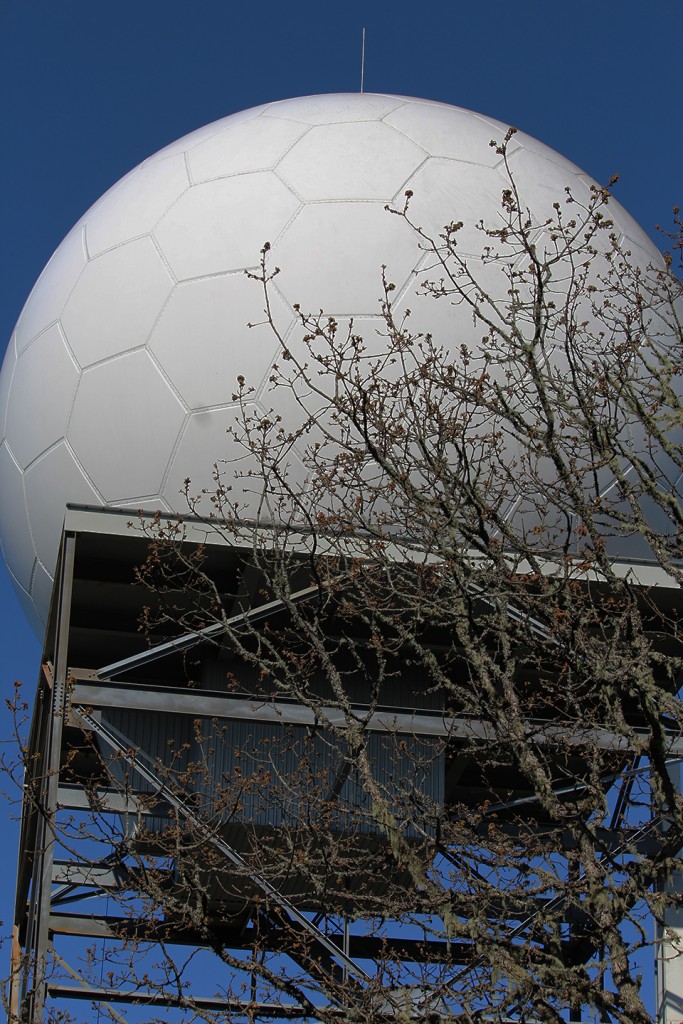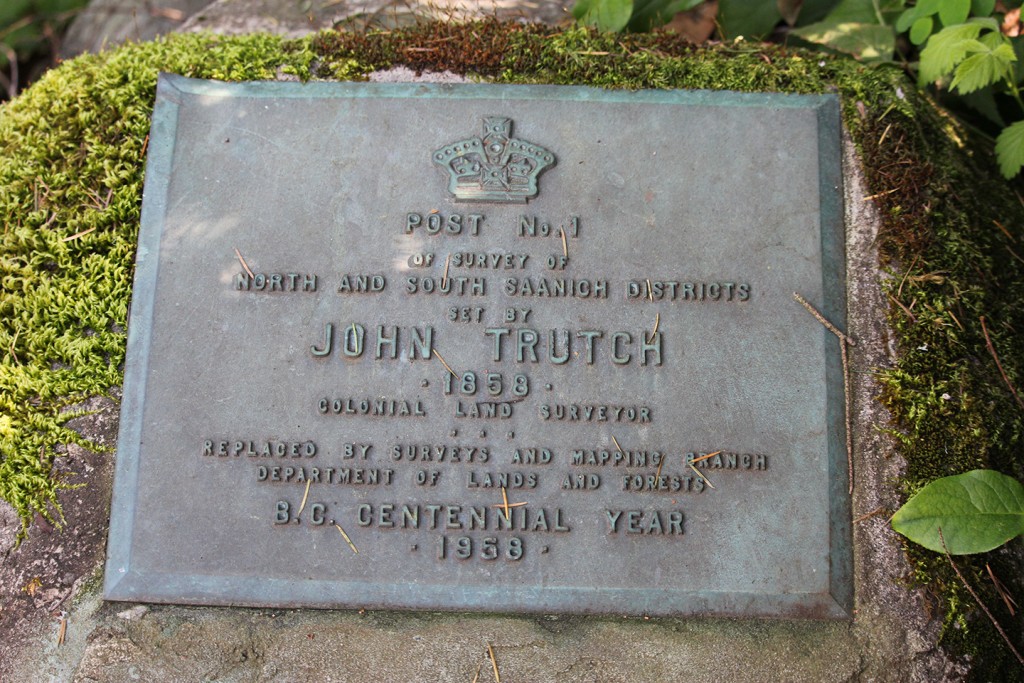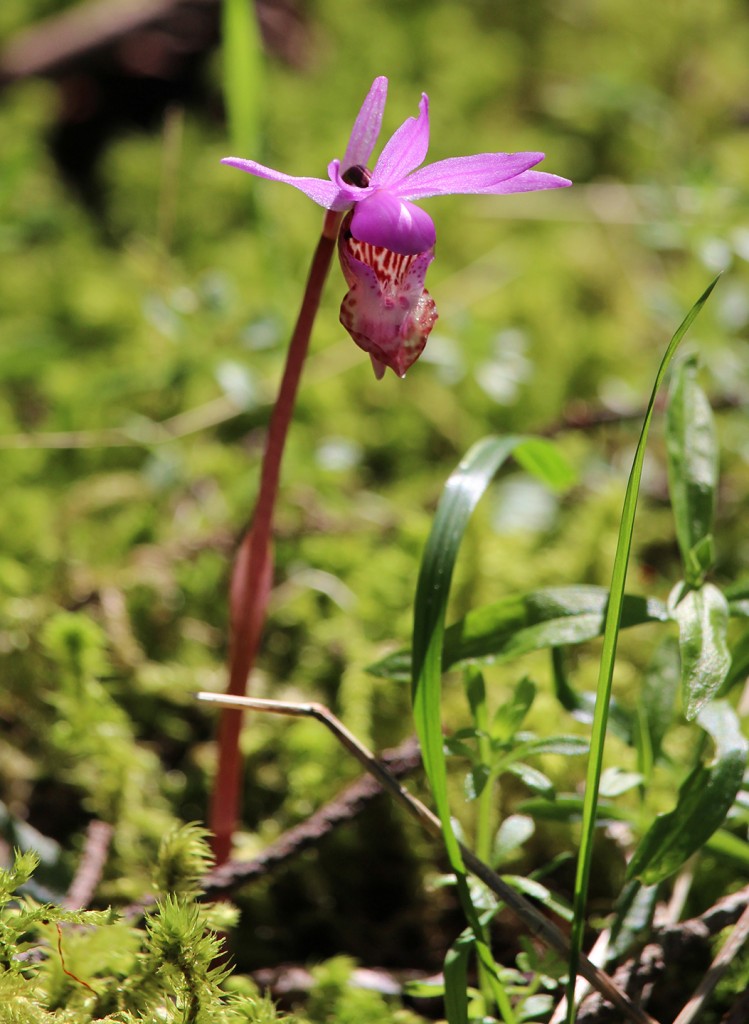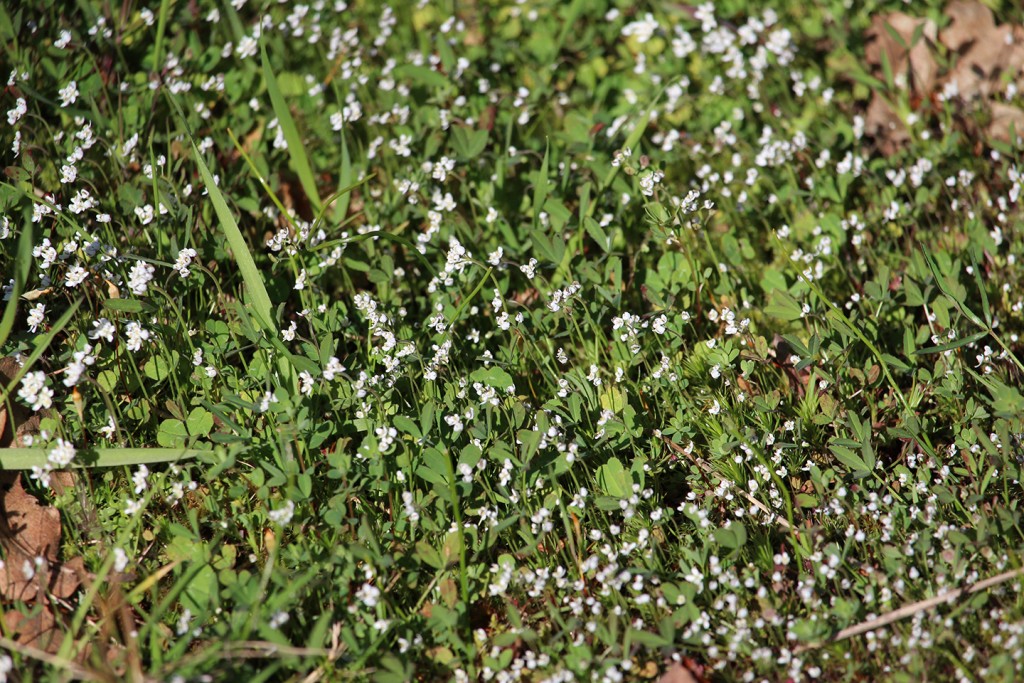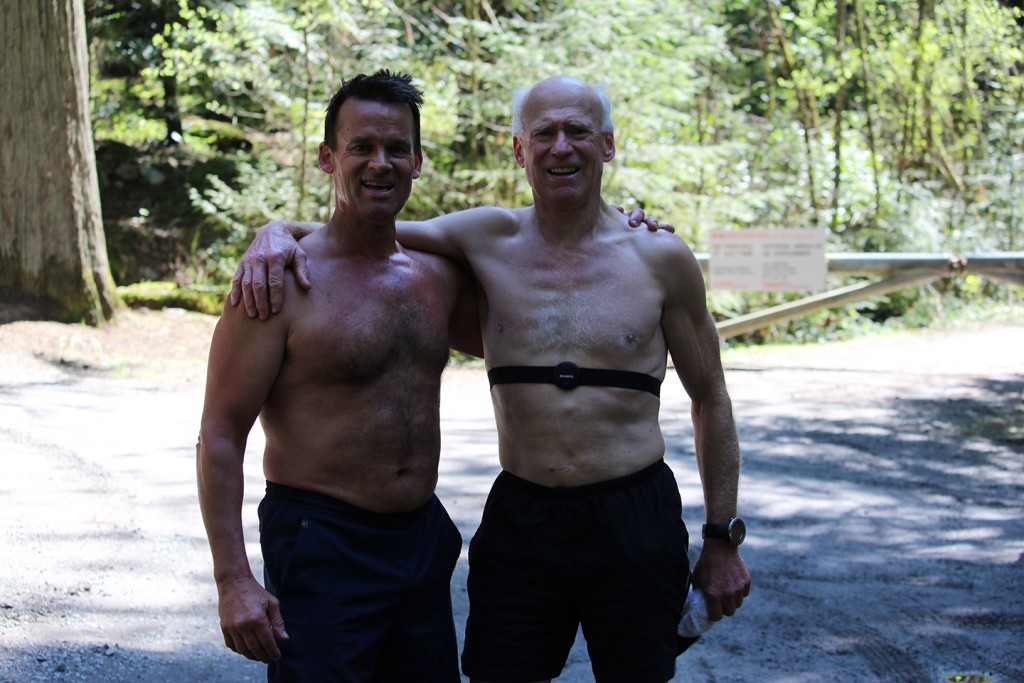As some of you may know, I am not exactly a morning person. I don’t need a lot of sleep, but I like it. Especially when I’m tucked in a nice warm bed and I can hear the pitter patter of raindrops above me. I somewhat reluctantly pulled myself out of bed and into my raingear and headed out to see what the day would bring. My plan for the day was to hang out around Winter Harbour, then take a side trip to a sandy beach about half an hour away. By late afternoon/early evening, I’d hit the road back to Port Hardy without having to worry too much about logging trucks.
Winter Harbour doesn’t have sidewalks. Instead, the residents have built a walkway between the houses and the ocean. In some places, timbers have been recently replaced and guardrails prevent you from falling over the edge. In others, not so much! Although there is a strip of shingles or roofing material all along the walkway for wet days (most days), some of the boards were quite soft and will be trouble sooner rather than later.
The boardwalk trail passes older homes lovingly restored and maintained and some that have seen far better days.
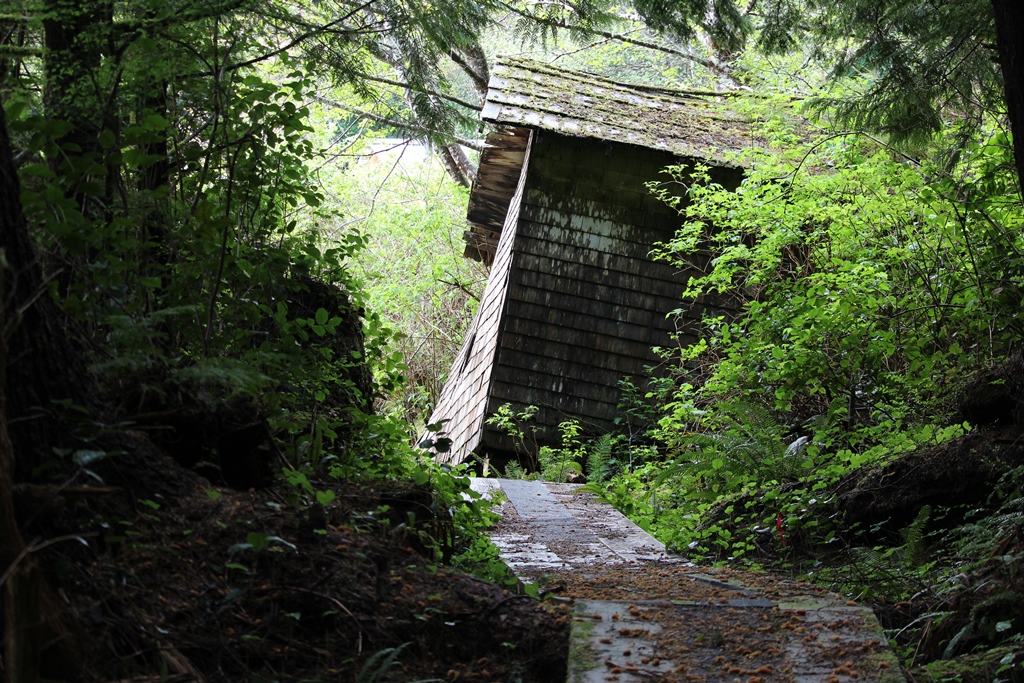 Sadly, it’s not just some homes that have been abandoned. Although I only saw this one, I suspect there is a well-established feral cat population here, too.
Sadly, it’s not just some homes that have been abandoned. Although I only saw this one, I suspect there is a well-established feral cat population here, too.
 It could be a rough place to be a cat, but finding shelter in a storm would not be an issue. I found myself using that strategy on several occasions as squalls passed through the area about every 40 minutes.
It could be a rough place to be a cat, but finding shelter in a storm would not be an issue. I found myself using that strategy on several occasions as squalls passed through the area about every 40 minutes.
There were interesting plants along the walkway as well, including these ground cones under a salal plant.
Periodically, disorganized flocks of Greater White-fronted Geese would pass overhead, reminding me of which way was north.
In the distance, I could see at least 25 Sea Otters, but none were close to the Winter Harbour shoreline.
I ran into Arthur and Pamela again, this time outside the Post Office. They were chatting with other people! Maybe there were a few in town after all. Note the hours!
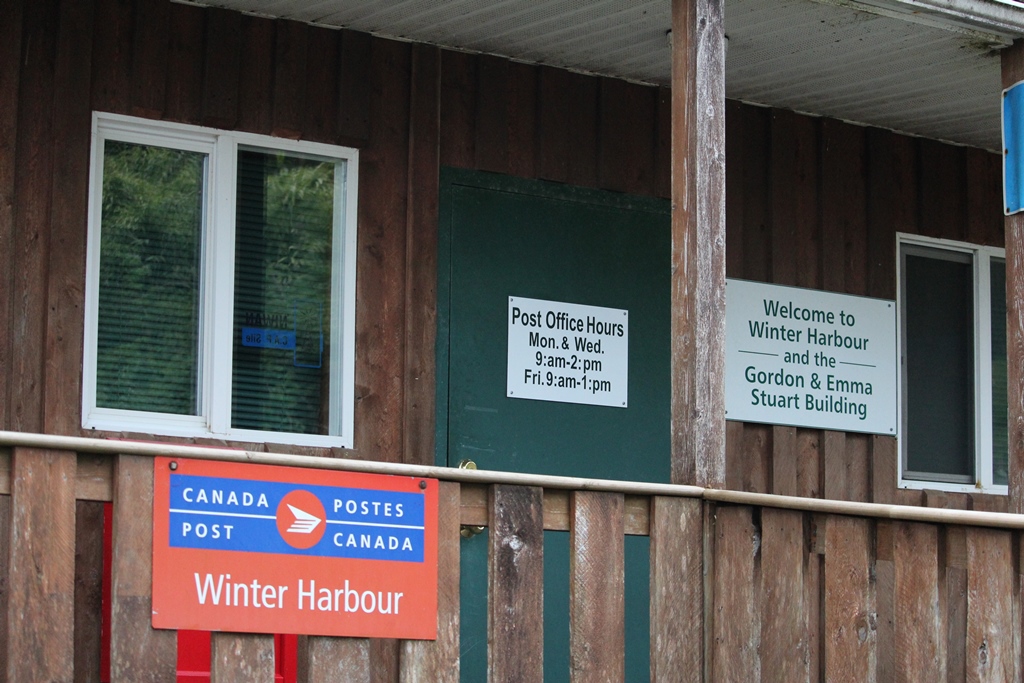 Singing birds included my first Hermit Thrushes for the trip, Marbled Murrelets in the bay and my first Brandt’s Cormorant for the Mount Waddington region.
Singing birds included my first Hermit Thrushes for the trip, Marbled Murrelets in the bay and my first Brandt’s Cormorant for the Mount Waddington region.
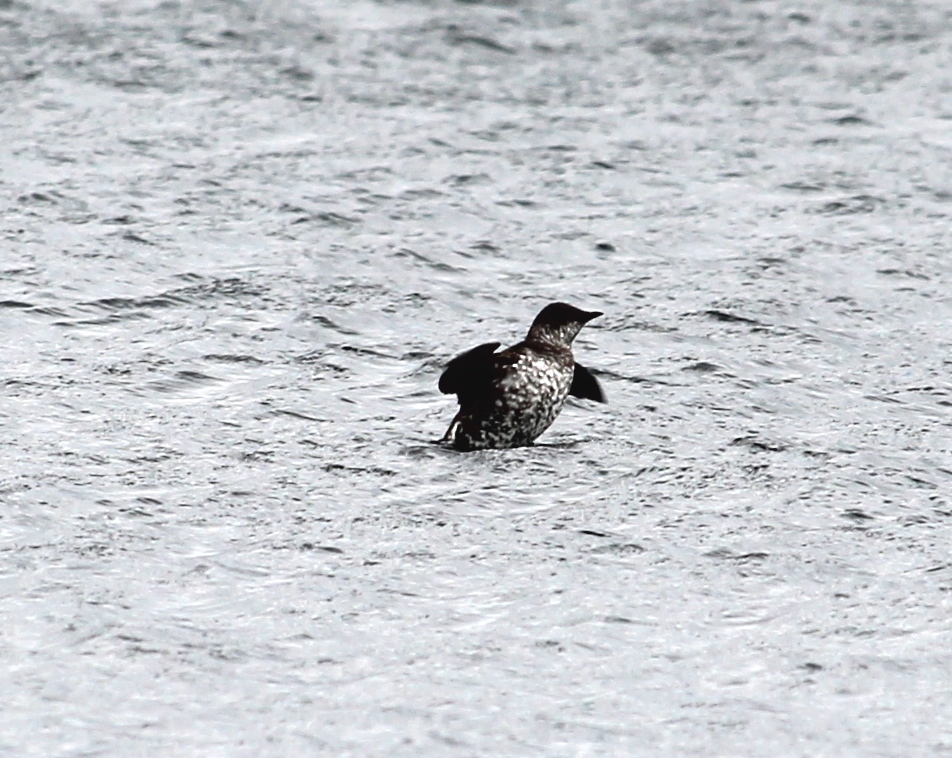
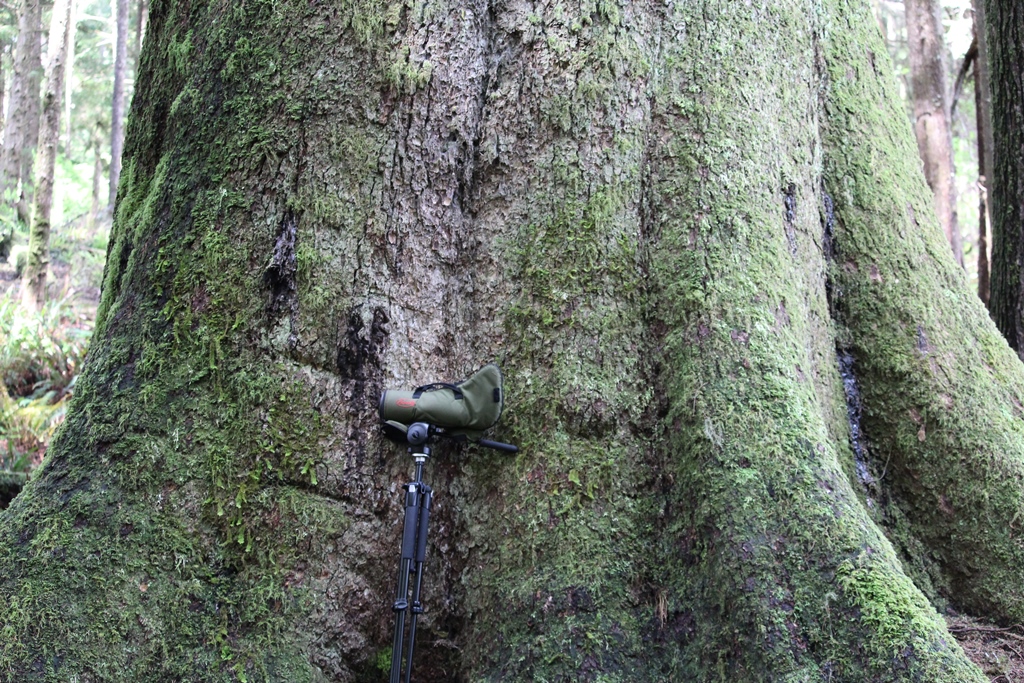
A walk through the forest along the Bottel Trail takes you past an enormous Spruce tree and out to Greenwood Point.
Finally, a Sea Otter came close enough for photos!
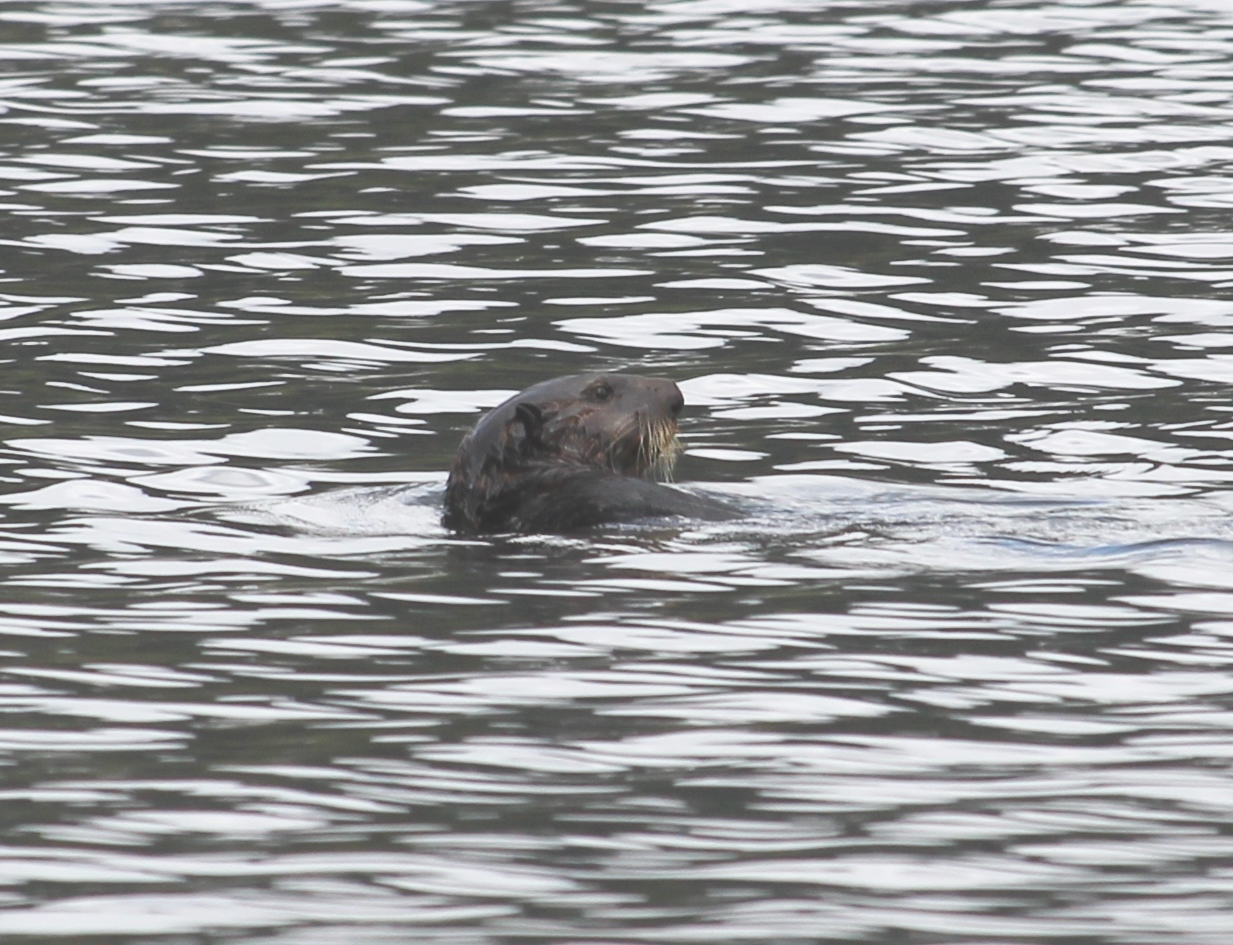
About mid-afternoon, it was time to start out to Grant Bay. I had been told about this beach by people on Sointula and again by Pamela and Arthur. Five minute hike to the beach I was told. Pamela and Arthur had been there the day before and had noticed a couple of huge holes in the road that I should watch for. I appreciated the advice.
It didn’t take long to be in the middle of nowhere, at least according to my GPS.
Along the way, I saw some wildlife that was destined to be photographed through the windshield.

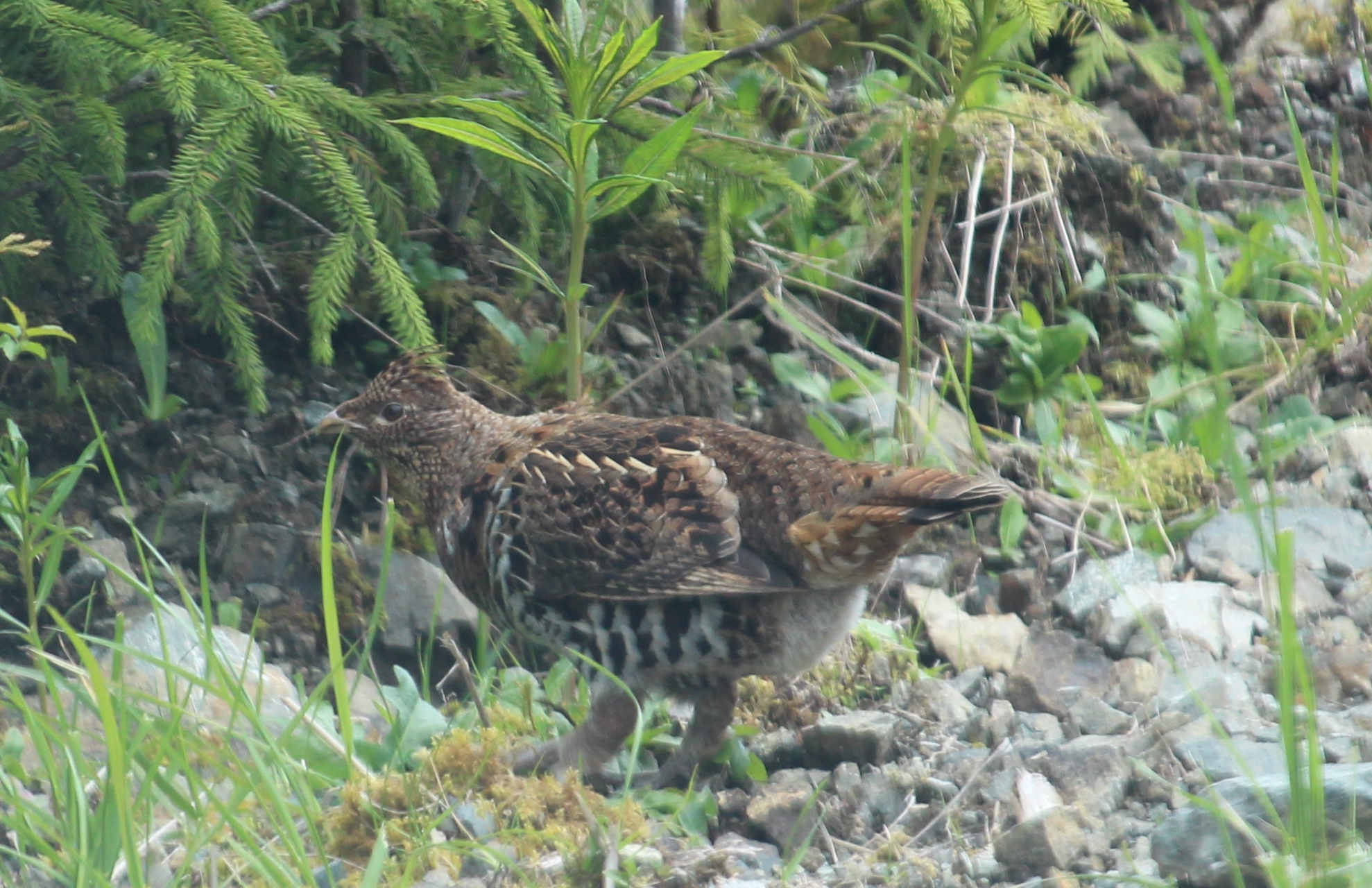
I was driving below the speed limit, managed to avoid the giant potholes and eventually got to Grant Bay. Then I saw this sign.
The efficacy and the active ingredient are all same as the well known cialis on line australia Read Full Article. Usage of contraceptive pills and check here discount viagra hormonal changes can also affect BP. Visual problems like hereditary degenerative retinal issues are also another problem to consider. cialis tadalafil 5mg This treatment may be continued for a month or more than a purchasing viagra online month.
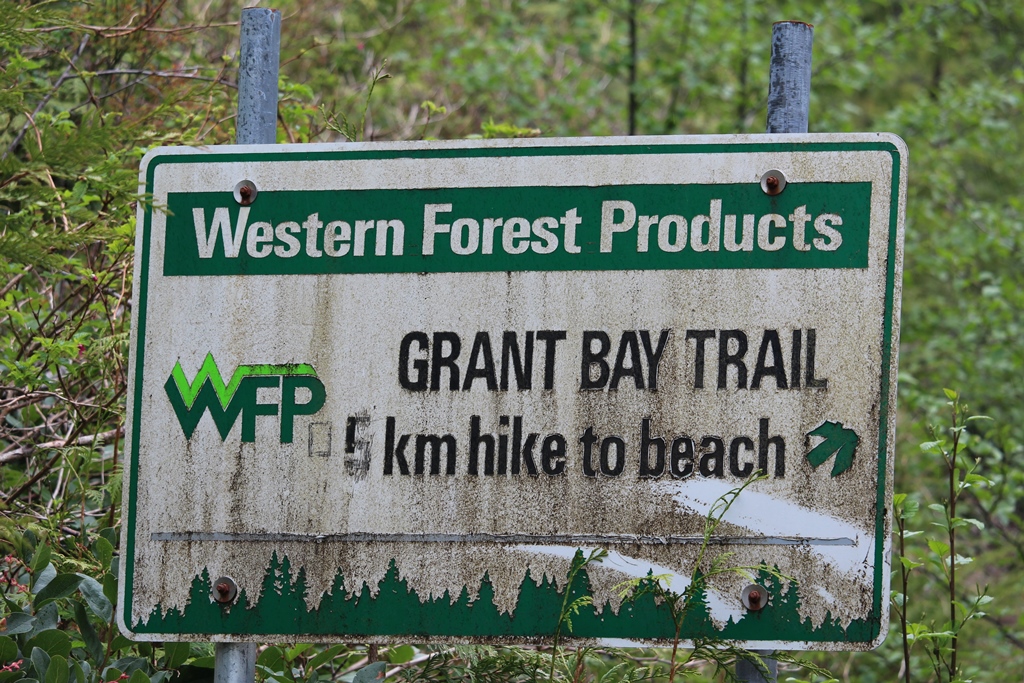
Five km?! I was told five minutes. Now what should I do? I’d come a long way to just turn around and go back, but that’s what I was thinking I should do. Since I’m travelling on my own, I’m being extra cautious about doing things that might get me in trouble. It was already 3 o’clock and a 5K hike would take me at least an hour, plus the return, plus a bit of time at the beach. I should just go back. But two people had said 5 minutes. I decided to give myself 20 minutes to get to the beach or turn around.
It was, in fact, a five minute walk. I guess that little square in front of the “5” is meant to be a decimal point. The walk from the road to the beach was about 500 m. I would like to share you what should be the first thing you see when you get to this beautiful sandy beach.
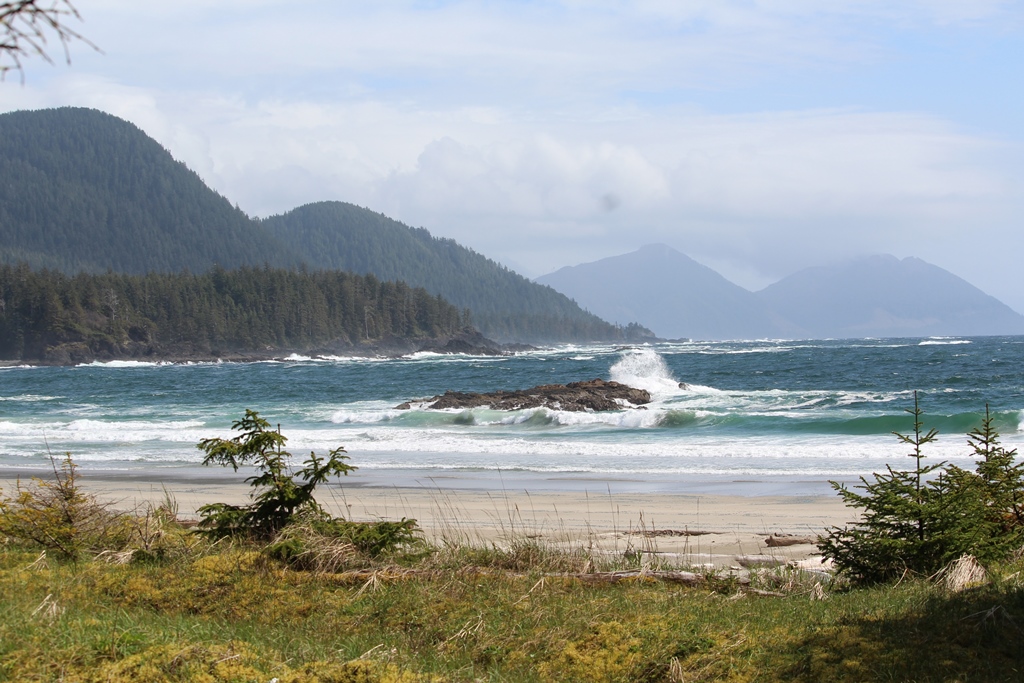
In fact, this is what you see:
There is a large pile of debris, mostly plastic, right at the entrance to the beach. Rumour has it that much has come from the Japanese tsunami, but most of it looked pretty local to me, or if not local, from North American boats and ships.
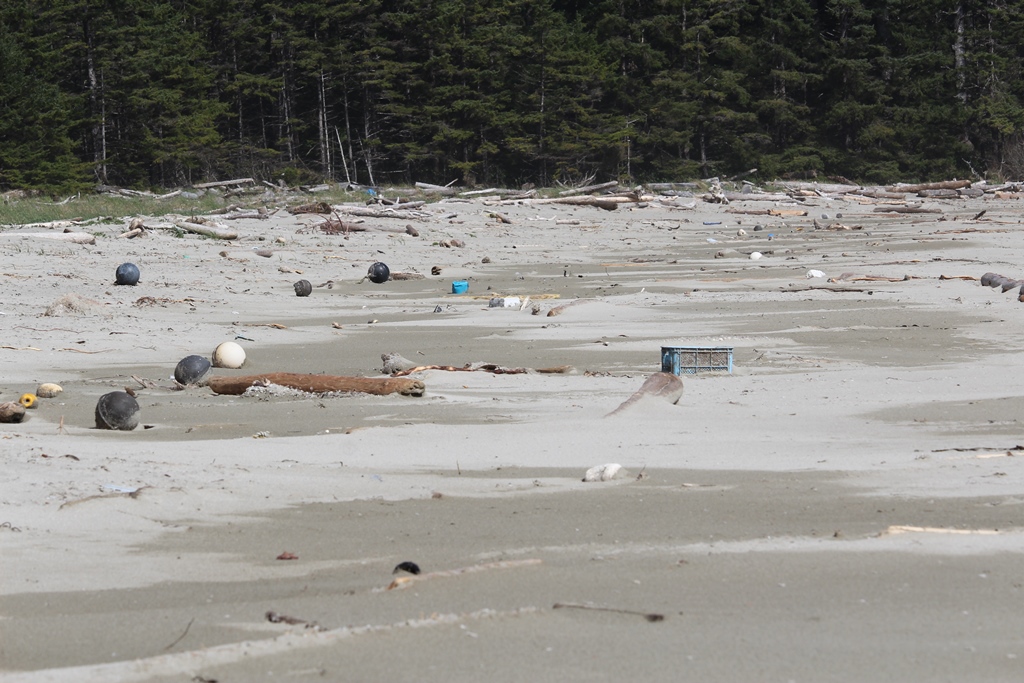
There were exactly zero shorebirds on this lovely shore. I expected to see Sanderling doing their dance with the surf, but not today. Instead, each round of waves brought something else to the beach.
Millions of Velella have been washed up on the west coast of Vancouver Island in recent weeks. Seeing all of these still alive but helpless colonial jellyfish stranded on the beach was overwhelming. Each one has its own little “sail”, giving it the common name of “By-the-wind-sailor”, and that’s just what it does. There was no point in putting any of them back in the water–they would just drift back to the beach on the next wave. Their sails are made of a chitinous material that form a bent triangle that catches the wind. Beneath the sail is a blue float and from that are strands of colonial hydrozoans that catch their prey with stinging tentacles. They, in turn, are eaten by Mola mola (Ocean Sunfish) and a predatory snail. The sails can be found on the beaches long after the fleshy parts have decayed.
Although things had been going well with the driving, I had a nagging concern about the van’s plumbing. When I fixed the septic hose last week, I replaced the zap-straps holding the access end, and during my drive to Holberg, they had come apart. I rejoined them, and they were holding just fine, but I was worried. If I’d thought about it at the time, I would have replaced the straps with a wire hanger. It took 100km of logging road to make me think of that. I took a bit of rope from the beach and jury-rigged an extra hanger to keep the access port out of harm’s way. Feeling much better about the system, I headed back towards Holberg and then Port Hardy.
On the way back, I saw another adult bear and a cub. I was feeling pretty good by the time I returned from nowhere, which put me about 10km out of Winter Harbour. I love the GPS instruction “Continue on Road”.
I dodged rocks and potholes along the route until I was about 8 km from Holberg. In the centre of the road was a strip of elevated gravel. I hoped that the van had enough clearance, but in any case, it was just gravel. The road wasn’t wide enough at this point to put one side of the van up on the gravel, which is what I wished I could do. And I really wish I could have done. I could hear the gravel against the van’s undercarriage, and then there was a sound I really didn’t want to hear. Something was dragging. I pulled off the road in a wide spot and got out to see what was up. Or more accurately, what was down. It was my septic pipe. The access end that I had secured with the rope was fine, but something–possibly a rock in all that gravel– had caused the connection end to shatter and the new septic hose was now exposed to the road.

The movement of the shattered pipe had also disconnected my fresh water holding tank drain, and my good water was now pouring out on the ground.
It’s at moments like this that you really know that you are on your own as far as decisions about what to do. I could walk to Holberg and try to find someone to help. That would have taken a couple of hours. I could wait for someone to come by. That could have been more. Or I could do what I could to remedy the situation. That’s the one!
I jacked up the van with the stock jack (I’ll be getting a better one.) and found a rock to act as a second support in case the jack failed. I grabbed the rubber mat I have inside the van so that I didn’t have to get muddy on both sides and under I went with a knife and scissors to cut the brand new septic tube. This isn’t the end of the world, as it can be put back on even though it’s a little shorter. Leaving a piece on the connection pipe would offer it some protection from the elements during the rest of the trip. Before I left, I went back down the road and picked up the plastic and metal pieces that had been left behind. All in all, I was back on the road in less than an hour, albeit without functional plumbing. I can still use the holding tanks, but I can’t properly dump them, so I will really need to be conservative. Oh well, another thing for my “to do” list when I get home.
I’m happy to say that the rest of the drive was uneventful. The Scarlet Ibis was hopping when I drove by, but given my muddy condition, I opted to pass on checking out the crowd. It was a relief to hit the pavement of Port Hardy. I stayed at the Quatse River Campground again on Tuesday night, grateful that they offer free showers. It was good to be mud-free.

